Why you can trust Tom's Hardware
The TLDR
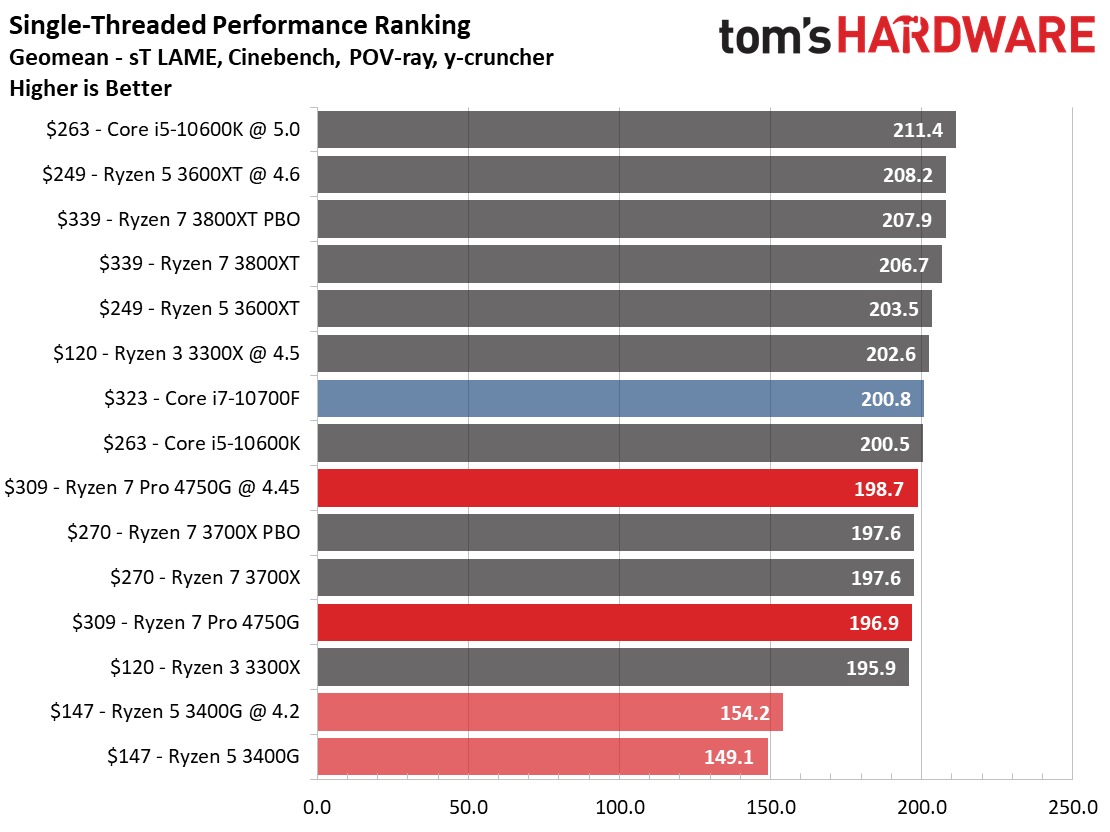
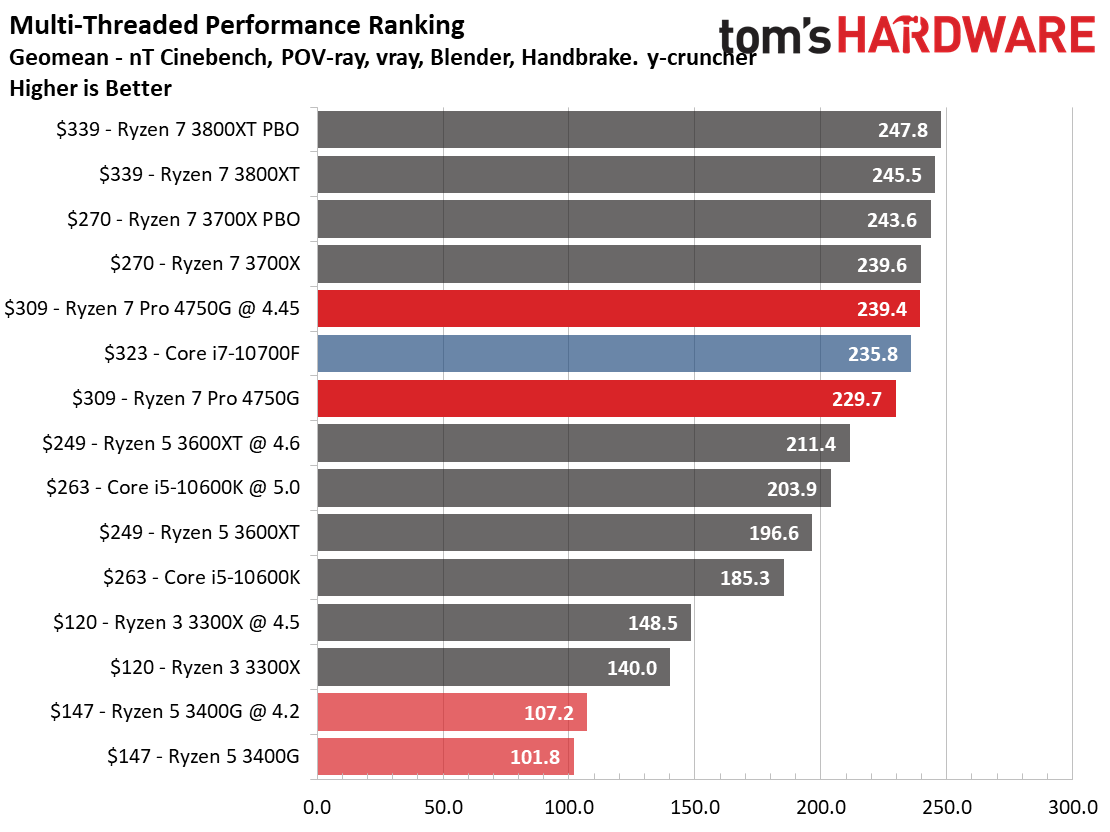
The charts above provide the geometric mean of several of our application tests (listed in the chart title) that are representative of broader trends in lightly- and multi-threaded applications. To maintain consistency within our test pool, we conducted all of the tests below with a discrete graphics card handling the display output.
We included all of our standard application testing below, but the quick takeaway is that the Ryzen 7 Pro 4750G offers 32% faster performance than the Ryzen 5 3400G in single threaded workloads. The chip also comes within a stone's throw of the 10700F's performance in single-threaded apps, only trailing by a mere 1%.
The Ryzen 7 Pro 4750G also offers more than twice the threaded performance of the Ryzen 5 3400G and trails the 10700F by 2.6% at stock settings, but leads the Intel chip by 1.5% after overclocking.
Rendering on AMD Ryzen 7 Pro 4750G
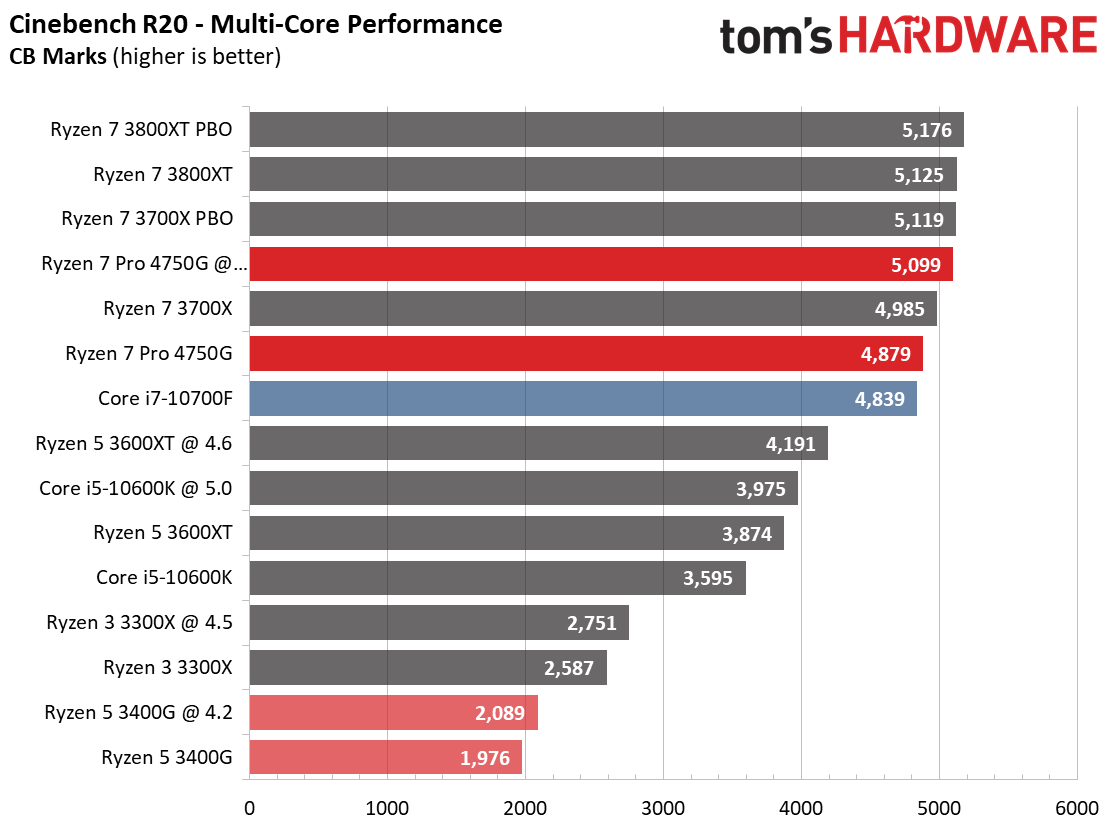
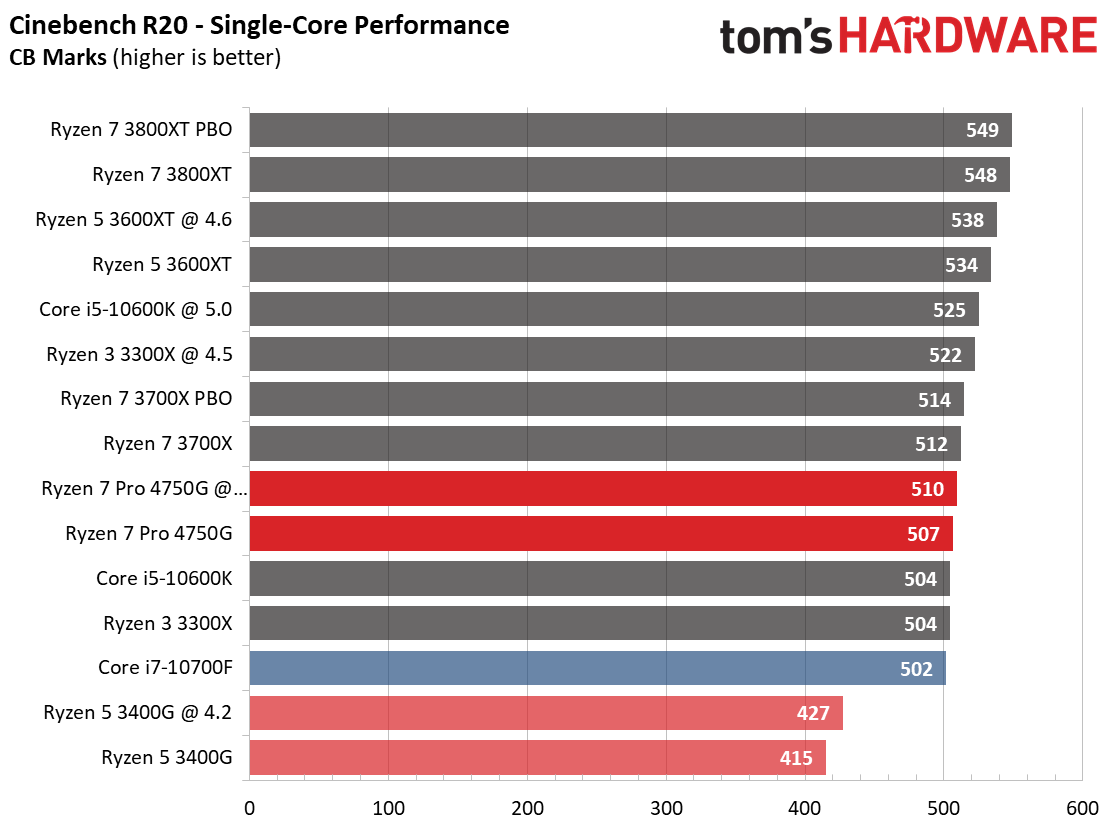
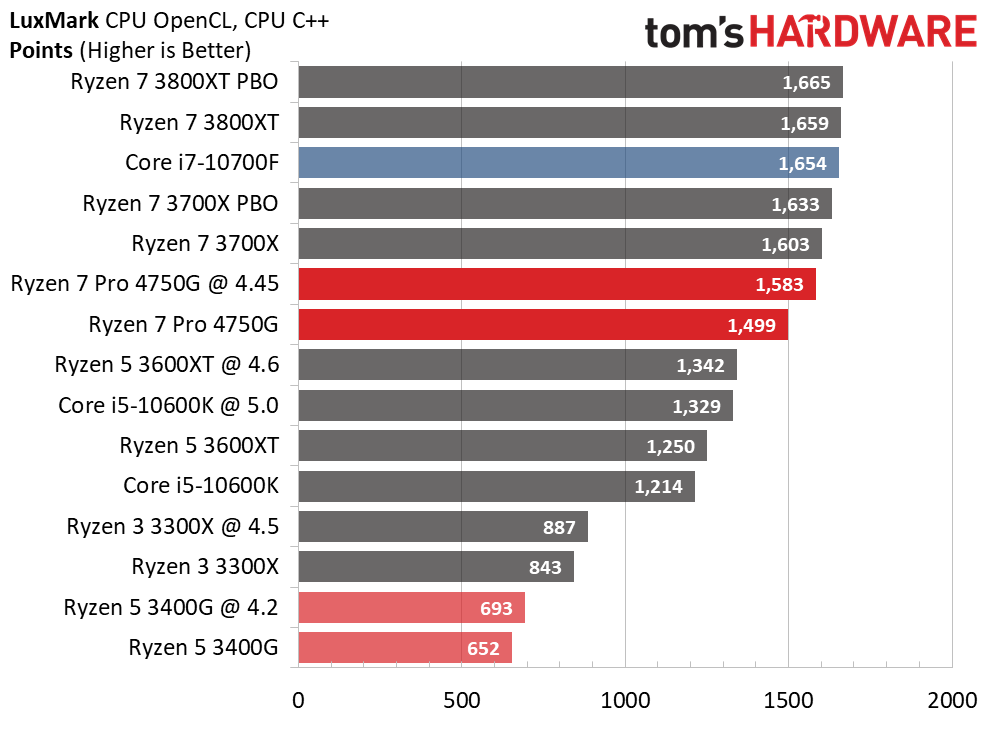
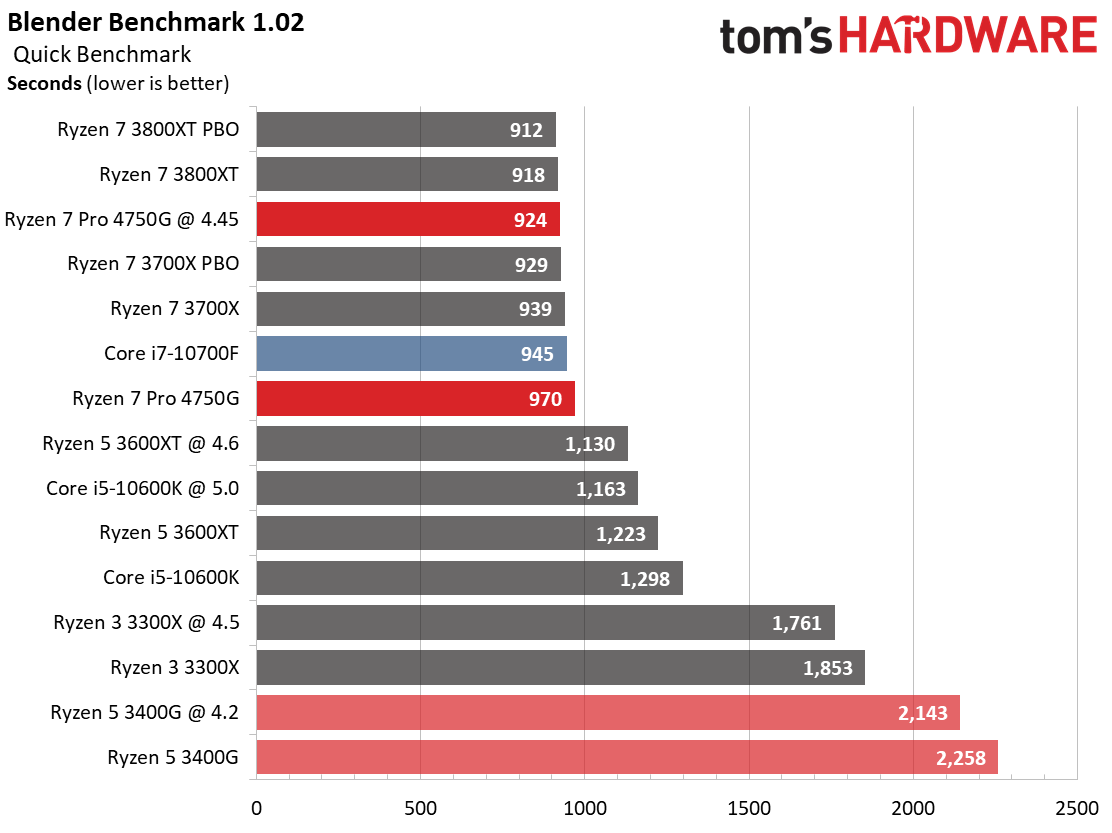
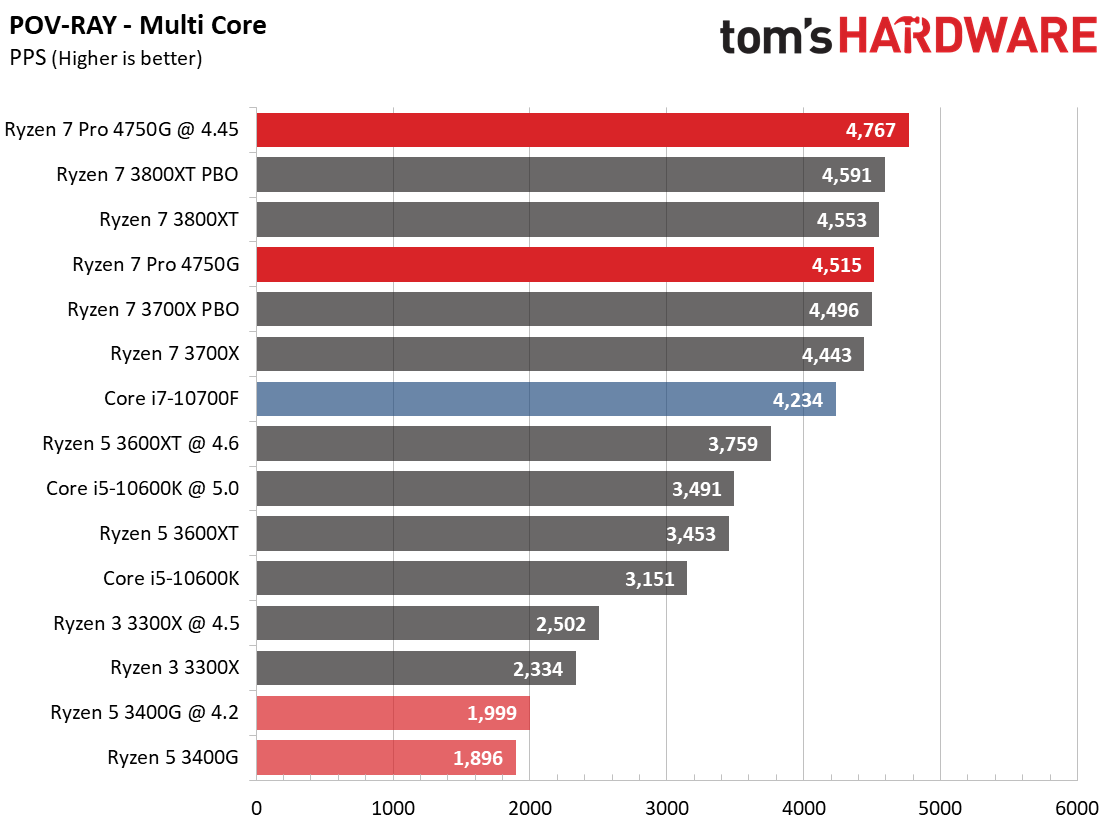

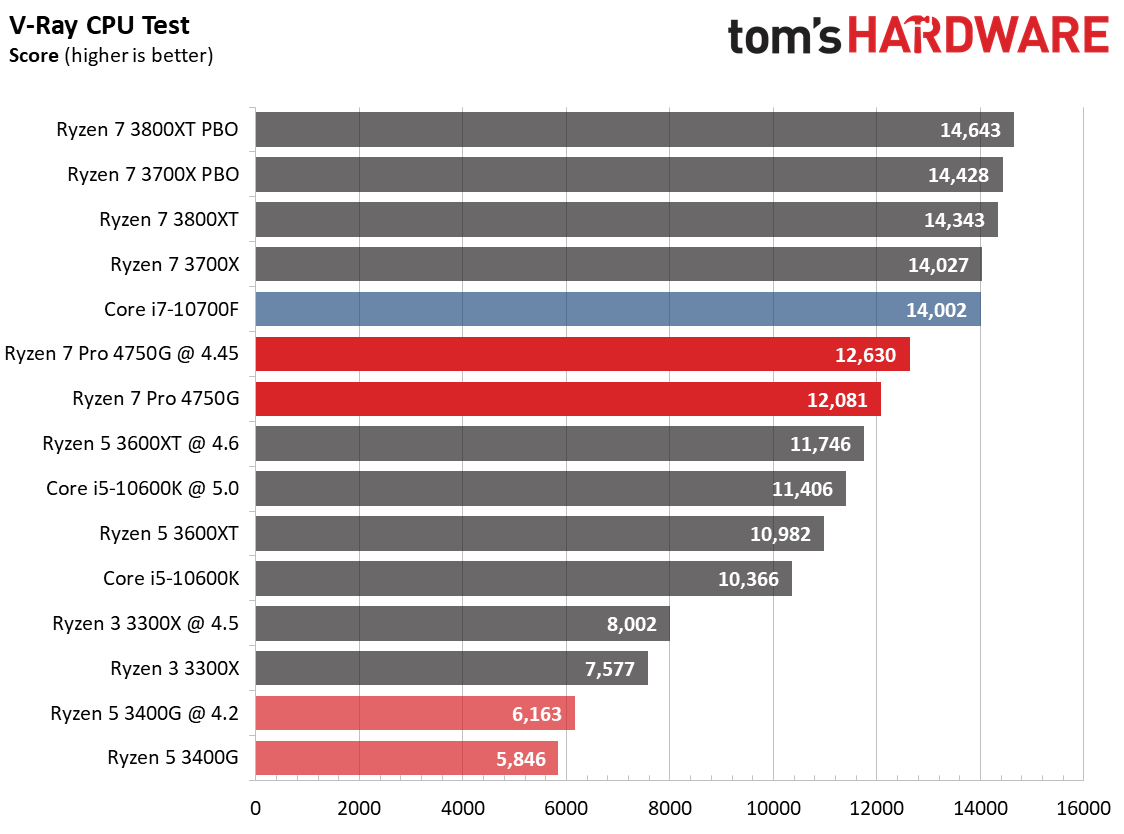
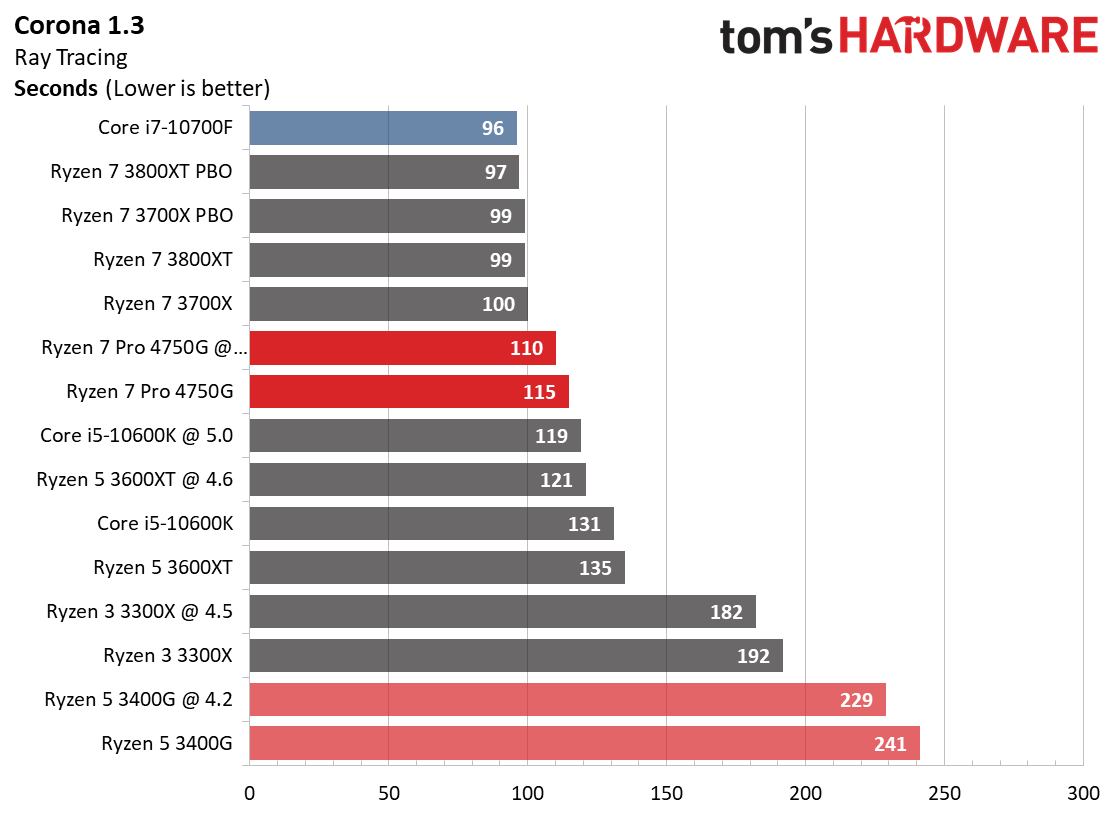
Cinebench is a Zen-friendly benchmark, and here we see the stock 4750G edge past the Core i7-10700F, and take a slight lead after overclocking. It isn't surprising to see the 4750G nearly double the performance of the Ryzen 5 3400G – it comes with twice the number of cores, thus setting the stage for big leaps in threaded CPU workloads on APUs. The 10700F returns fire in the LuxMark C++, V-Ray and Blender tests as its takes the lead, but it trails in multi-threaded POV-Ray.
The Ryzen 7 Pro 4750G also takes a lead over the 10700F in single-threaded Cinebench, but trails again in the POV-Ray benchmark that leans heavier on AVX throughput.
Encoding on AMD Ryzen 7 Pro 4750G
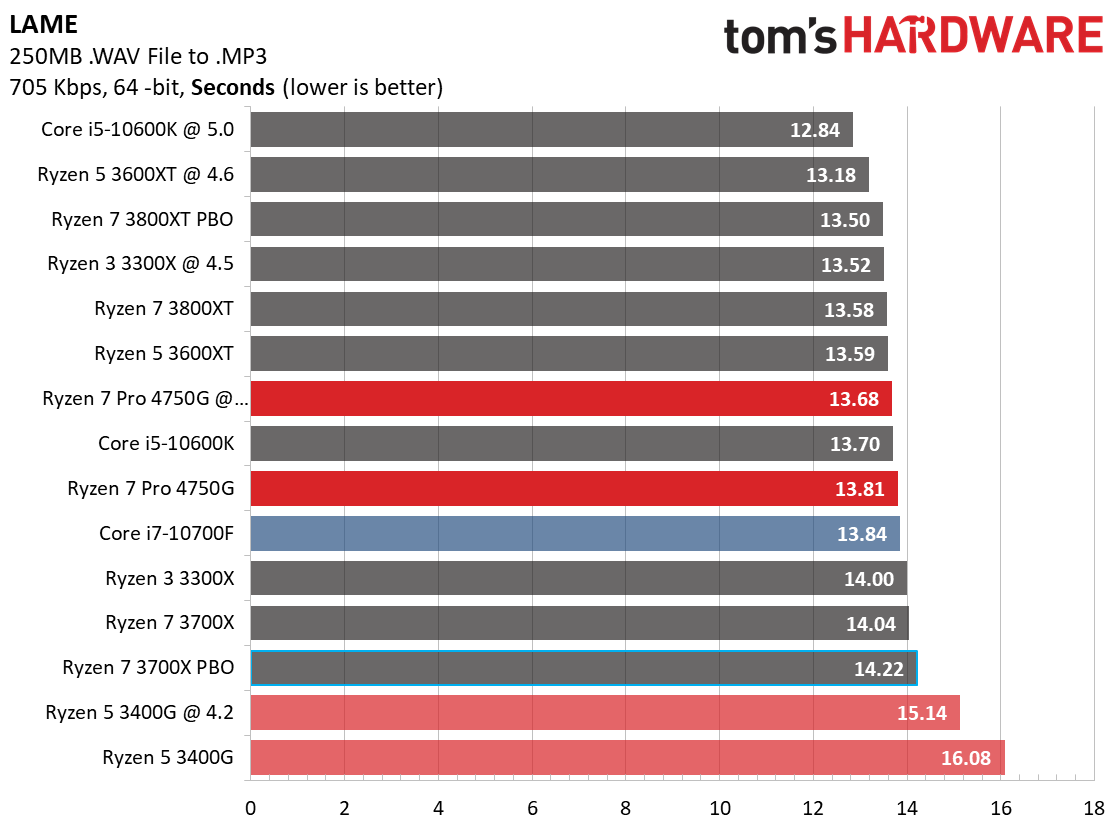
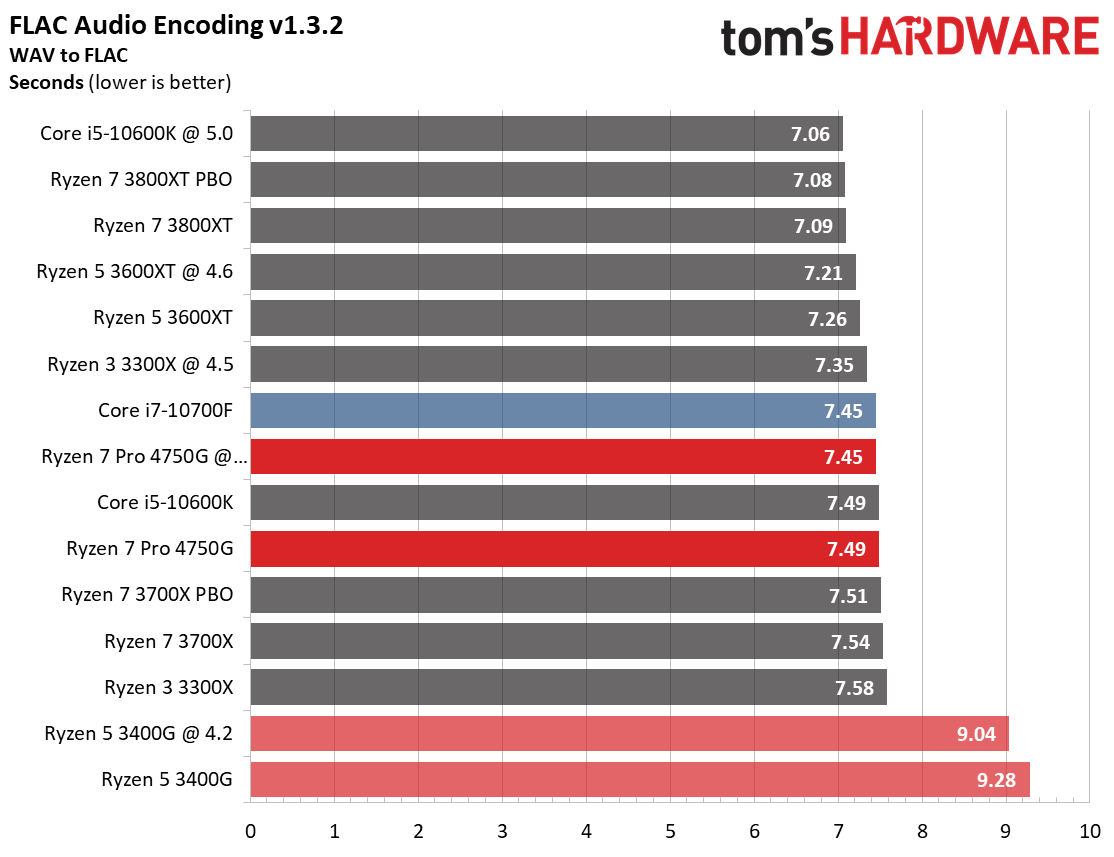
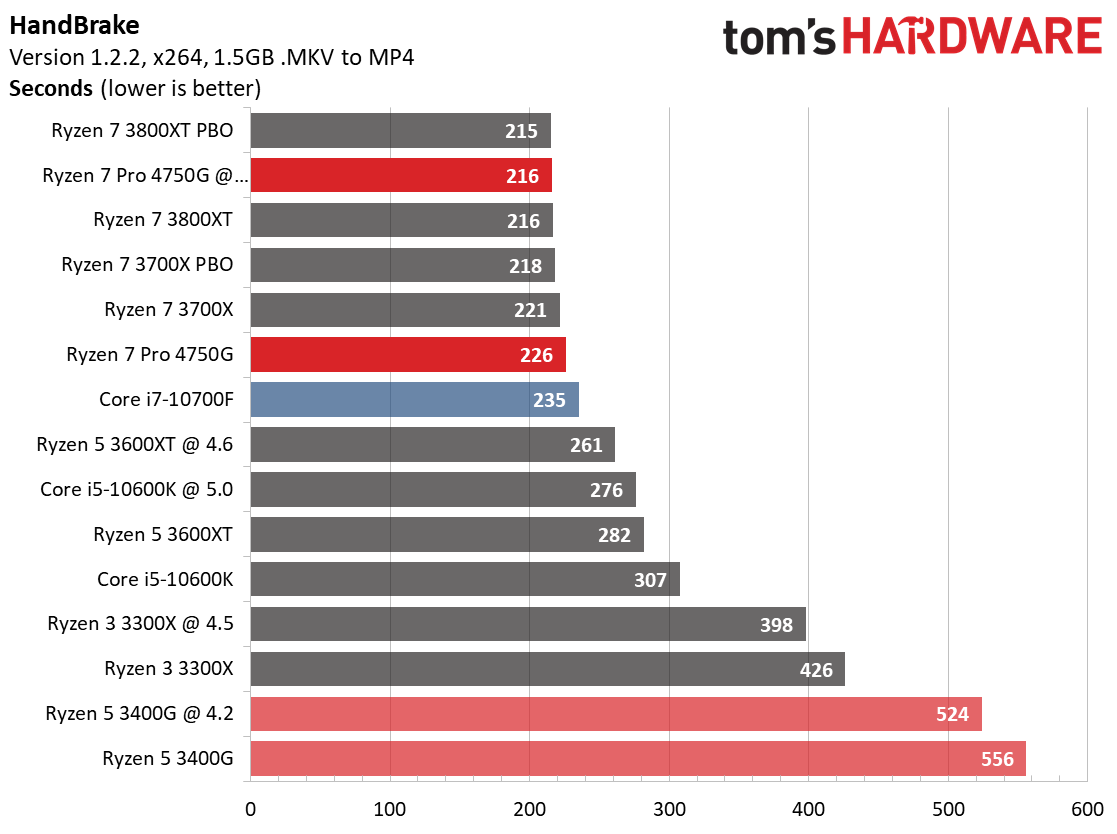
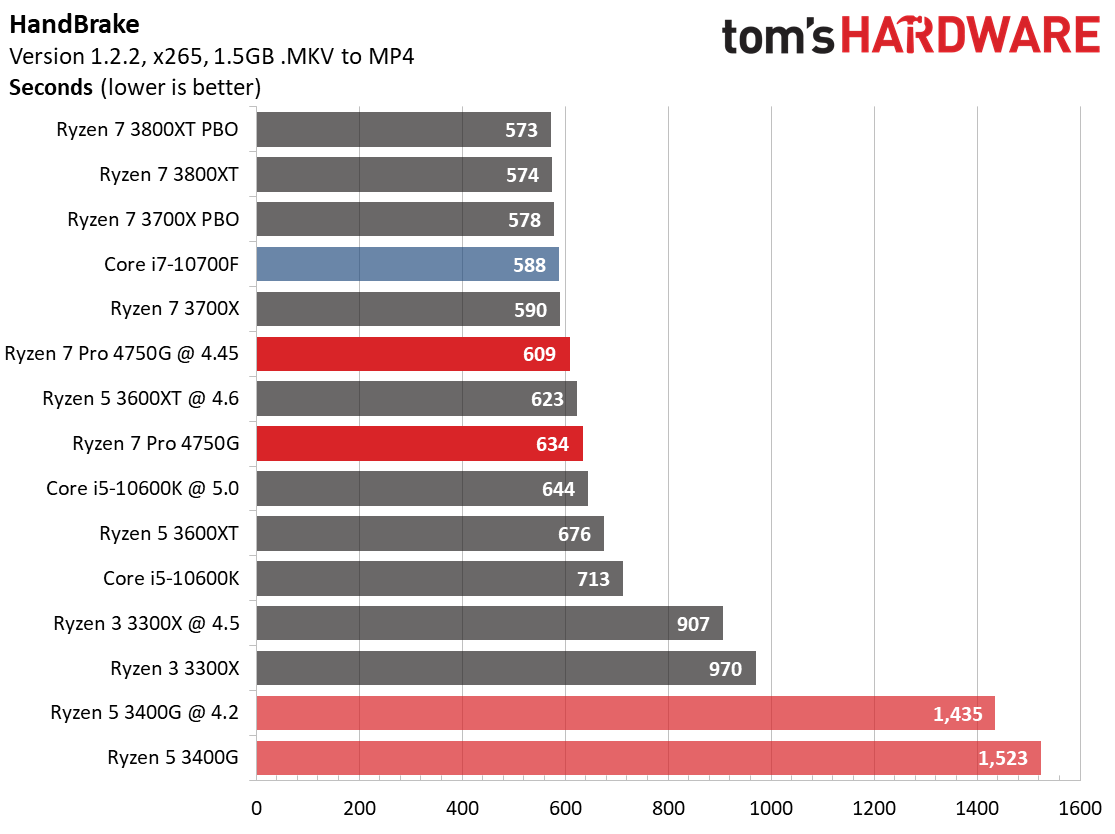
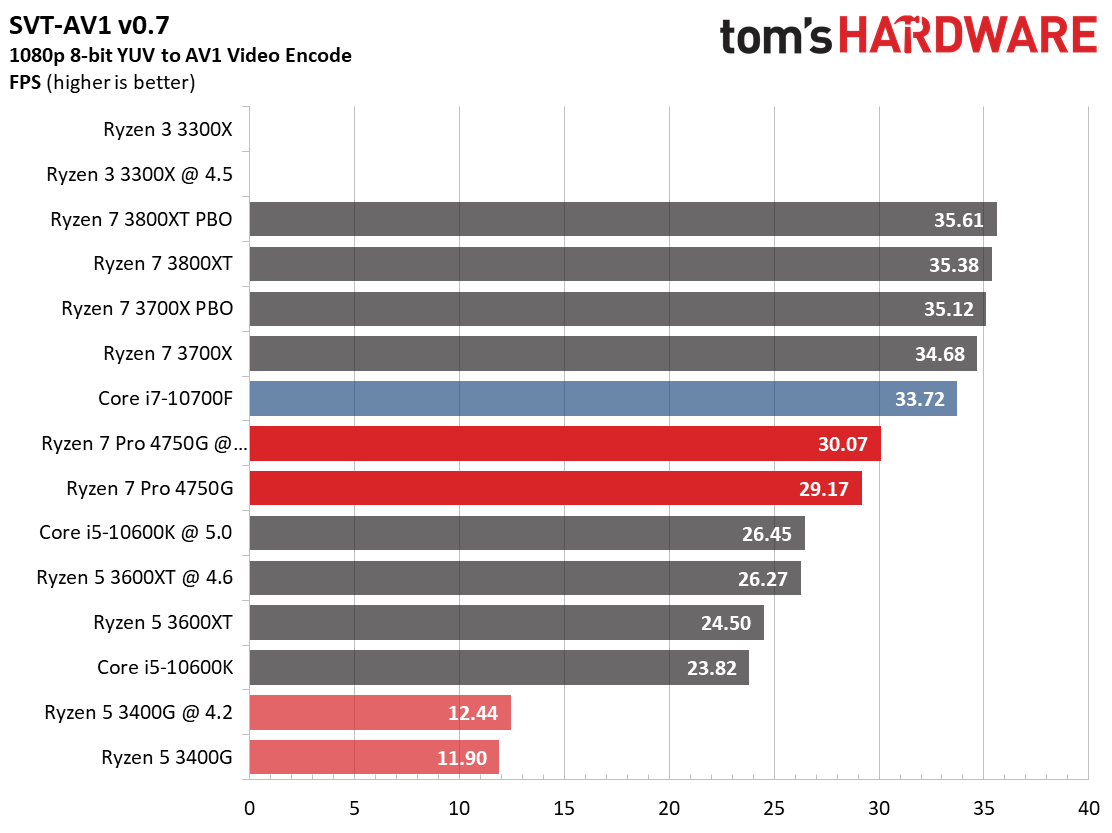
The single-threaded LAME and FLAC encoding tests respond well to per-core performance, which typically benefits Intel's chips. The Ryzen 7 Pro 4750G carves out a slim lead in LAME and only trails the 10700F by 0.5% in the FLAC benchmark, showing that it is particularly competitive in this price range.
The threaded HandBrake x264 and x265 tests find the two chips trading blows, with slim performance deltas that swing either way between the chips.
Get Tom's Hardware's best news and in-depth reviews, straight to your inbox.
Web Browsing on AMD Ryzen 7 Pro 4750G
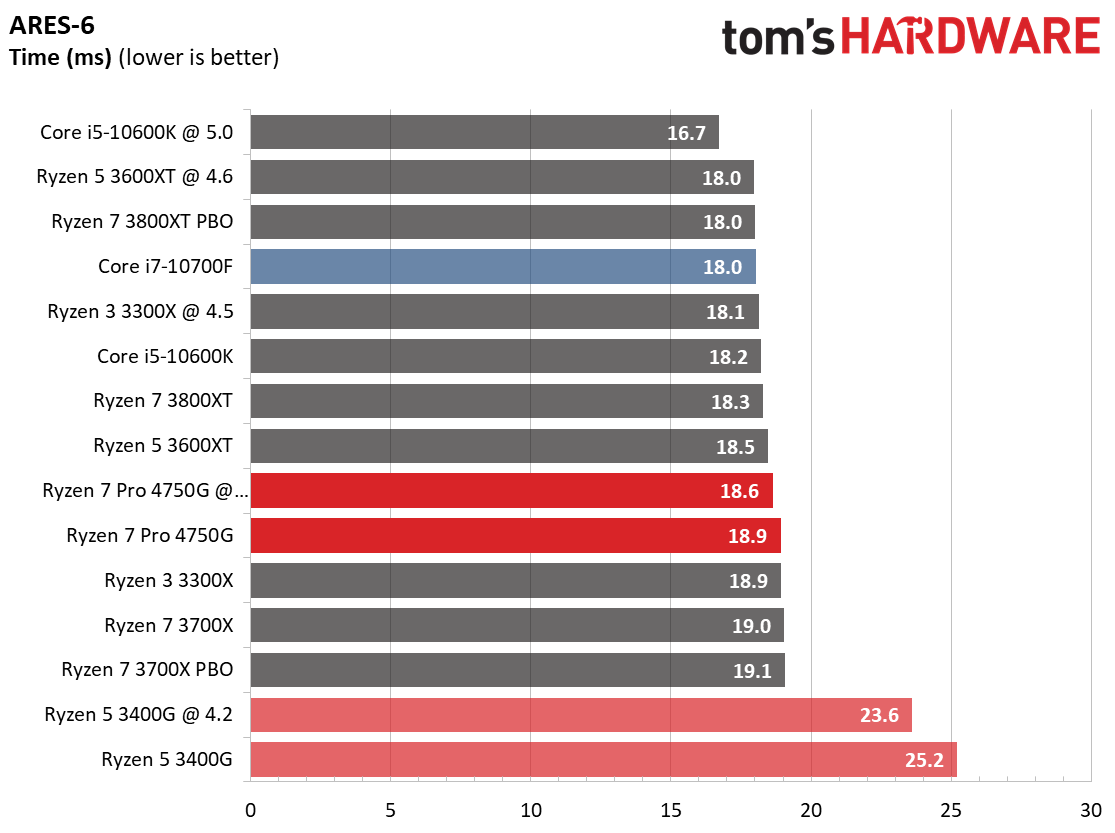
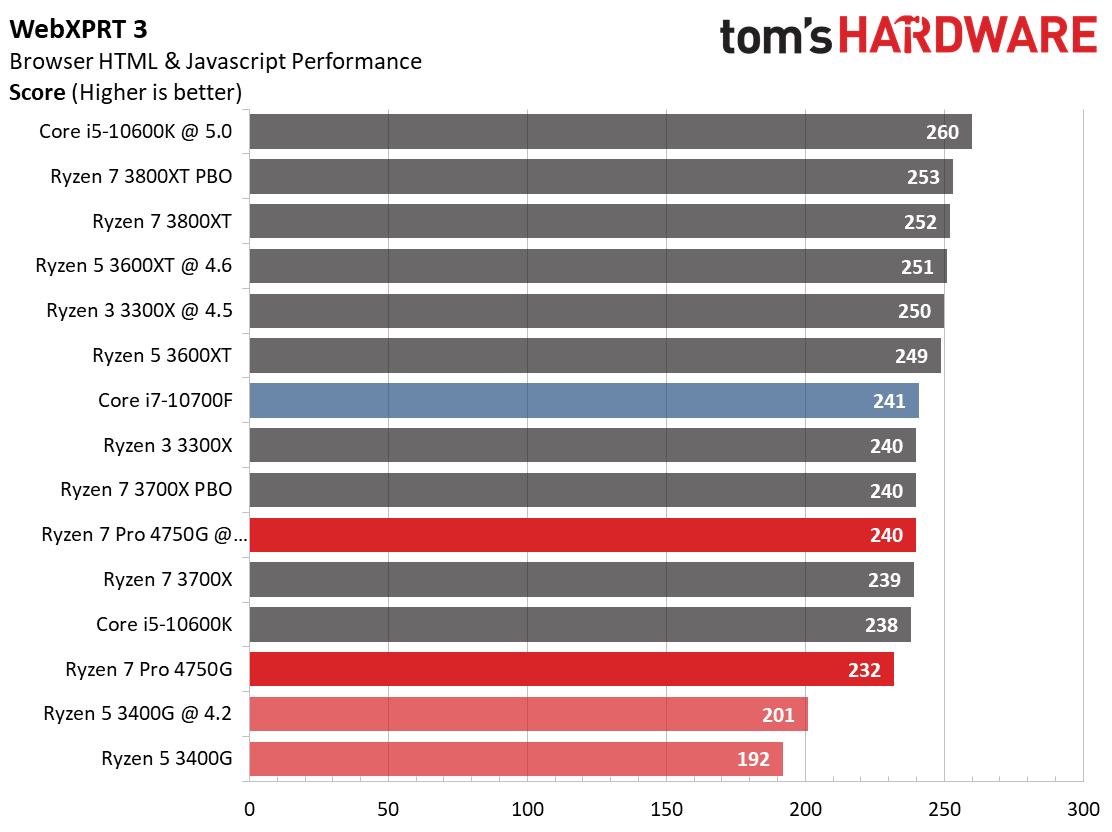
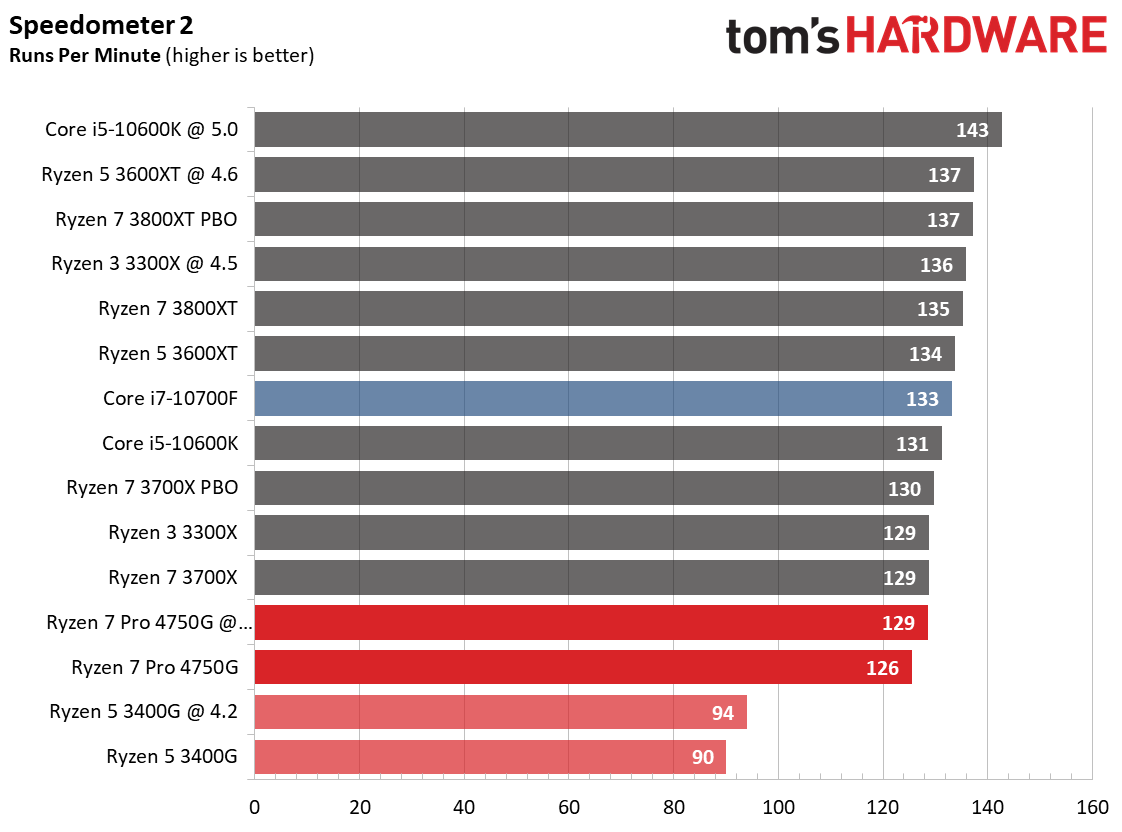
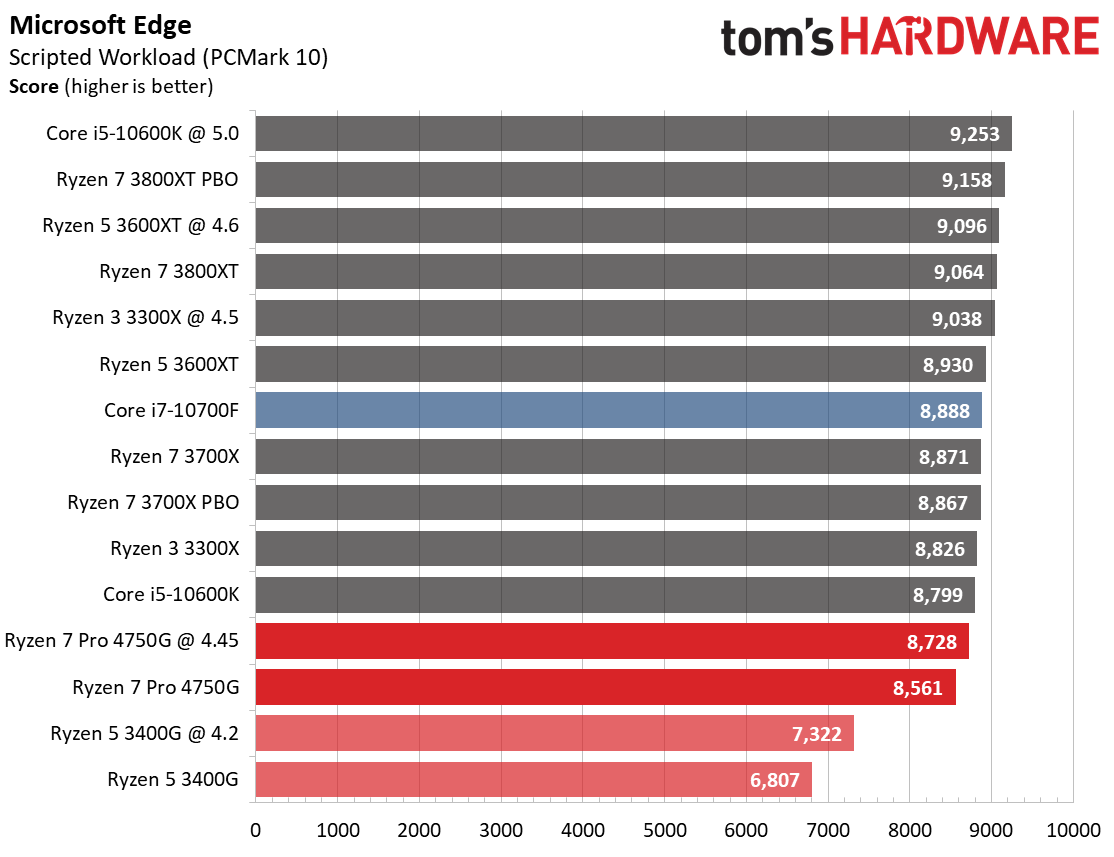
Single-threaded performance reigns supreme in most web browsers, and the Ryzen 7 4750G marks a tremendous improvement over the previous-gen Ryzen 5 3400G. Intel still holds the overall lead in these tests, but Renoir significantly reduces the gap between AMD's APUs and Intel's competing chips.
Office and Productivity on AMD Ryzen 7 Pro 4750G
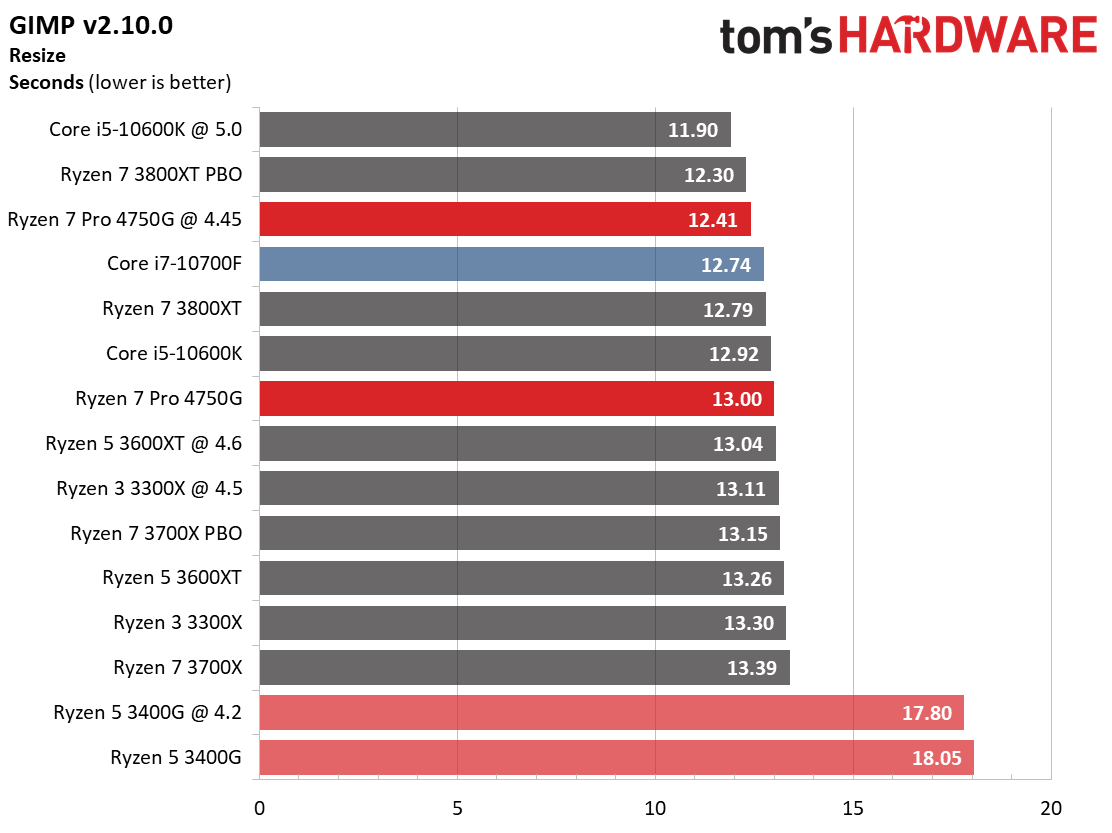
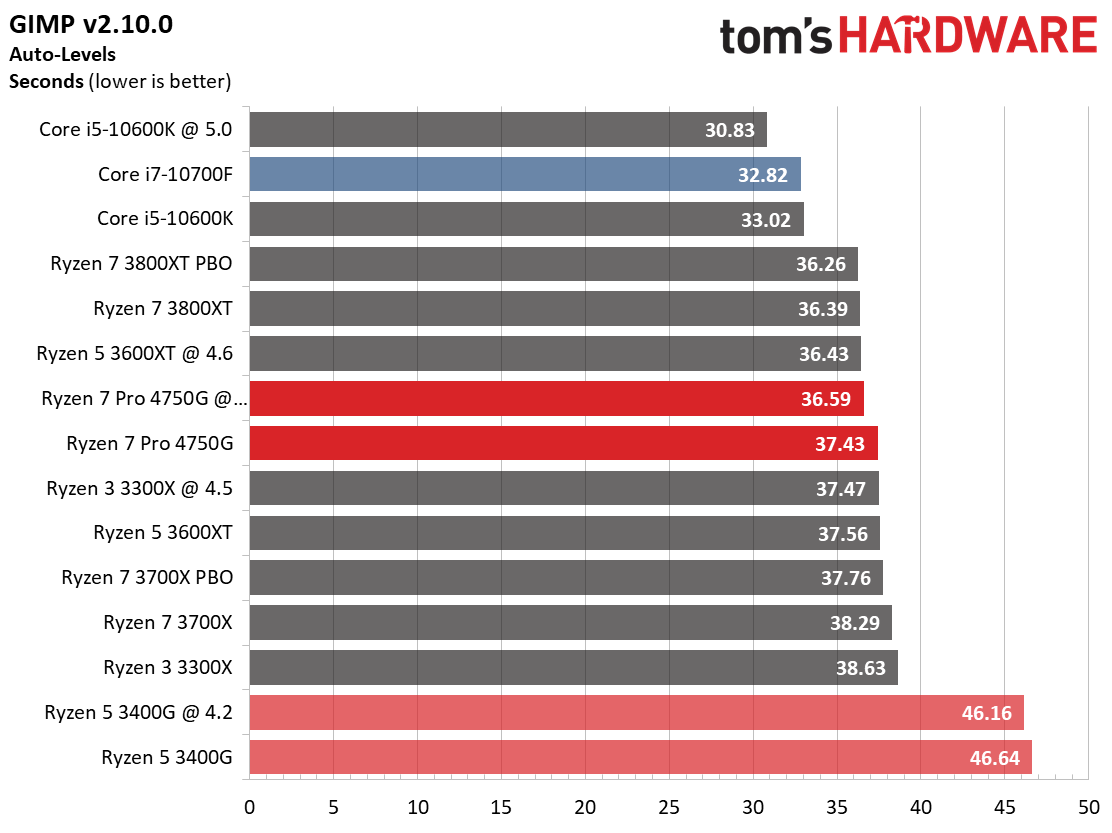
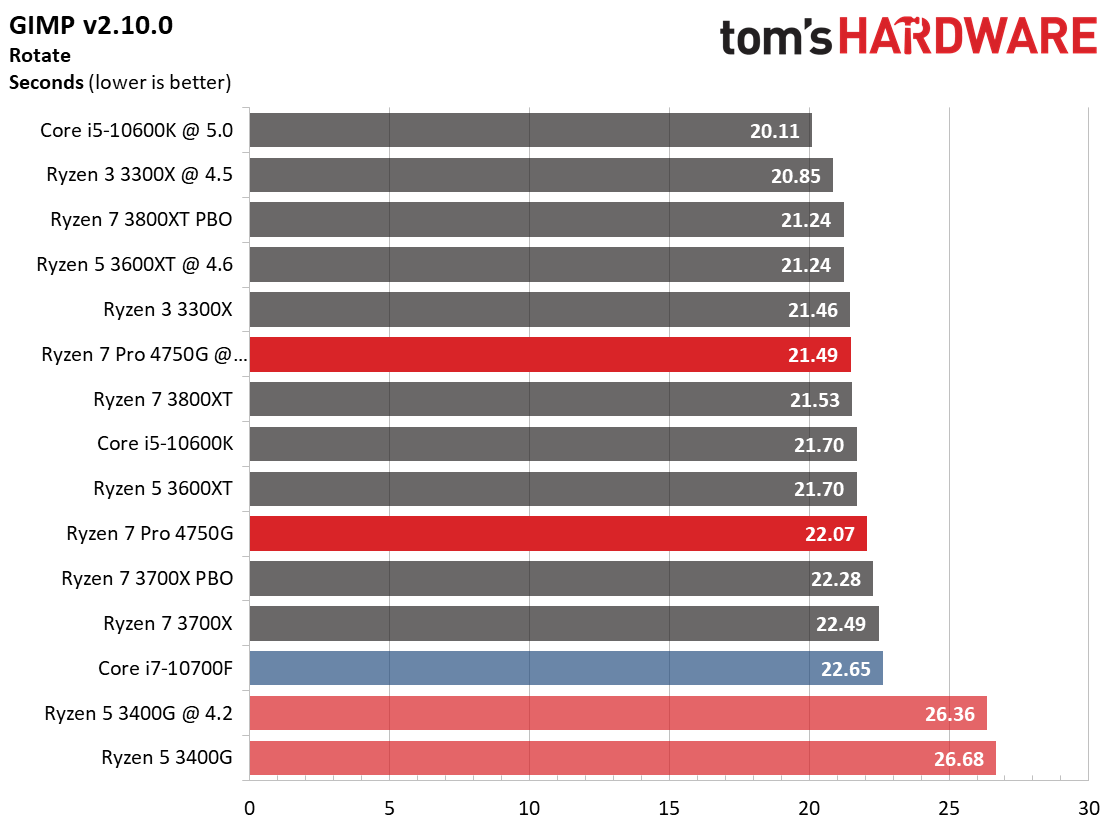
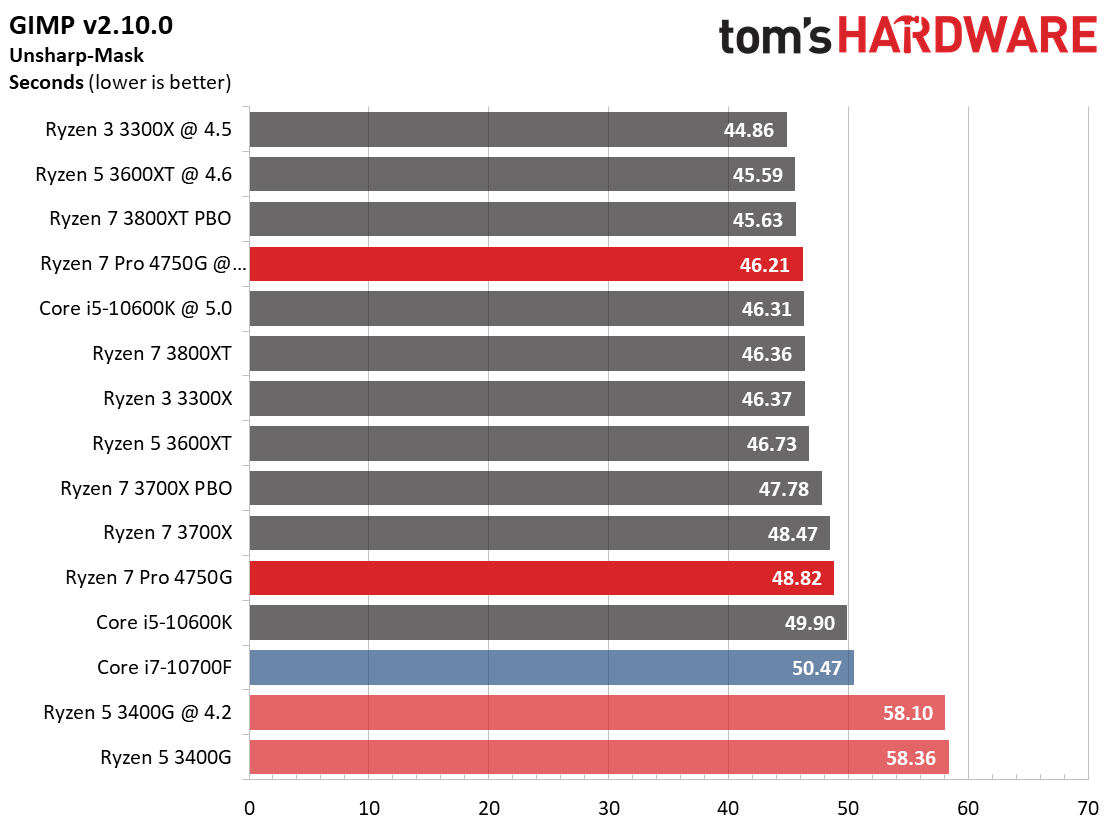
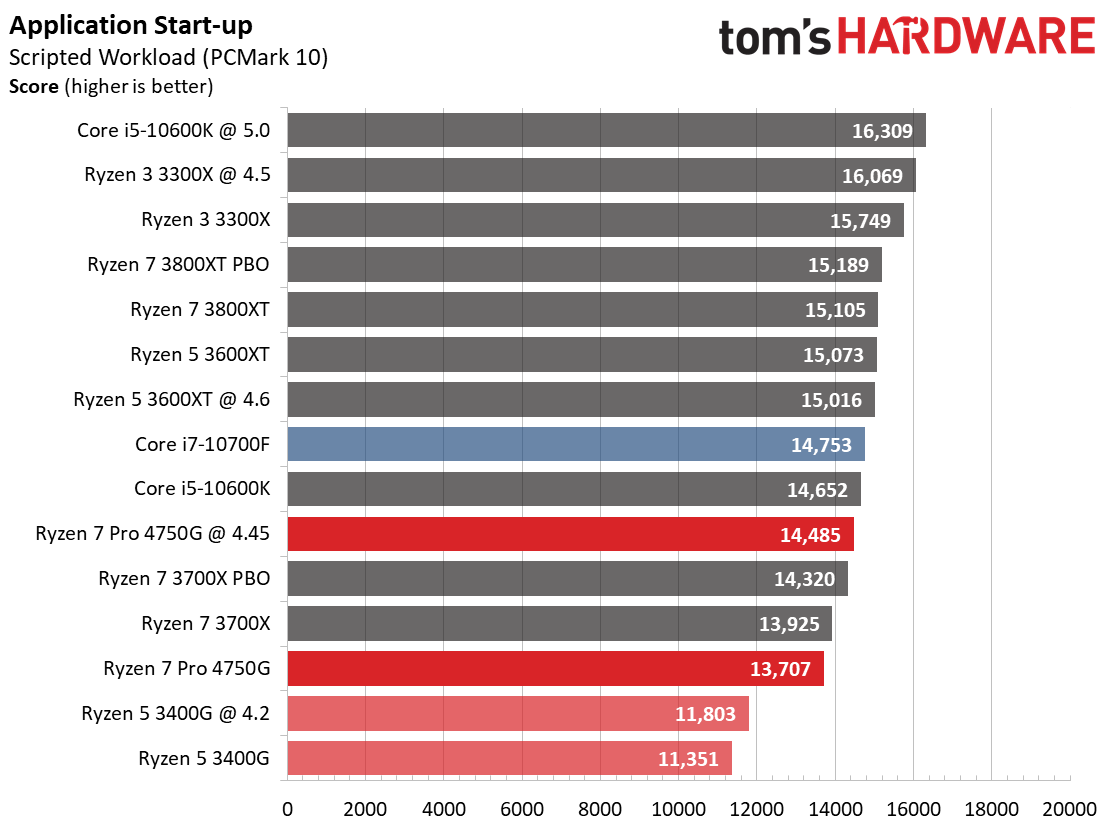
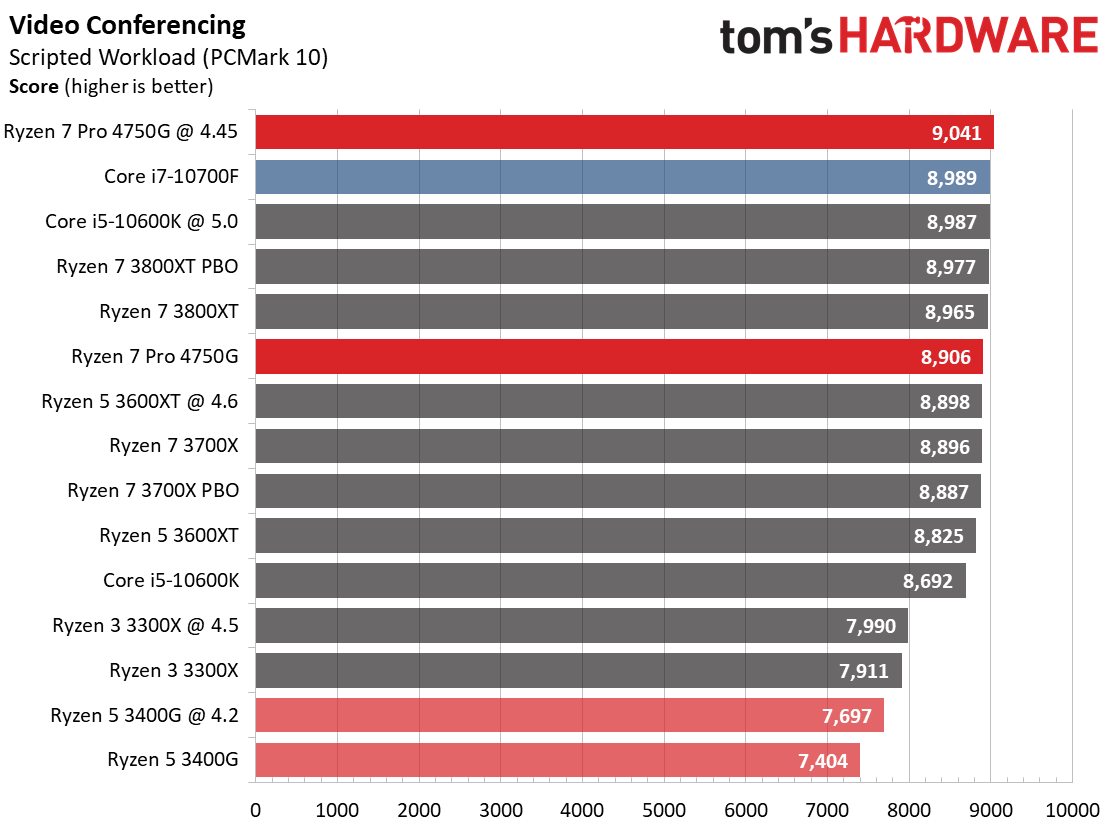
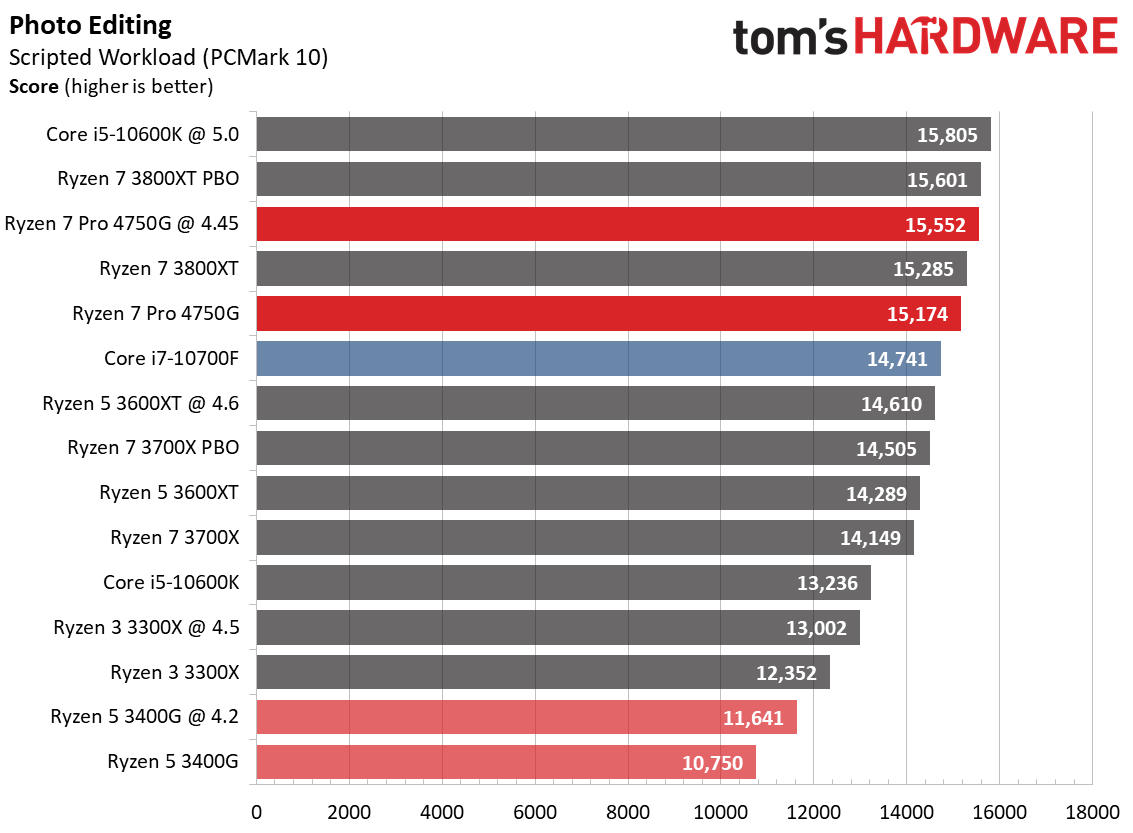
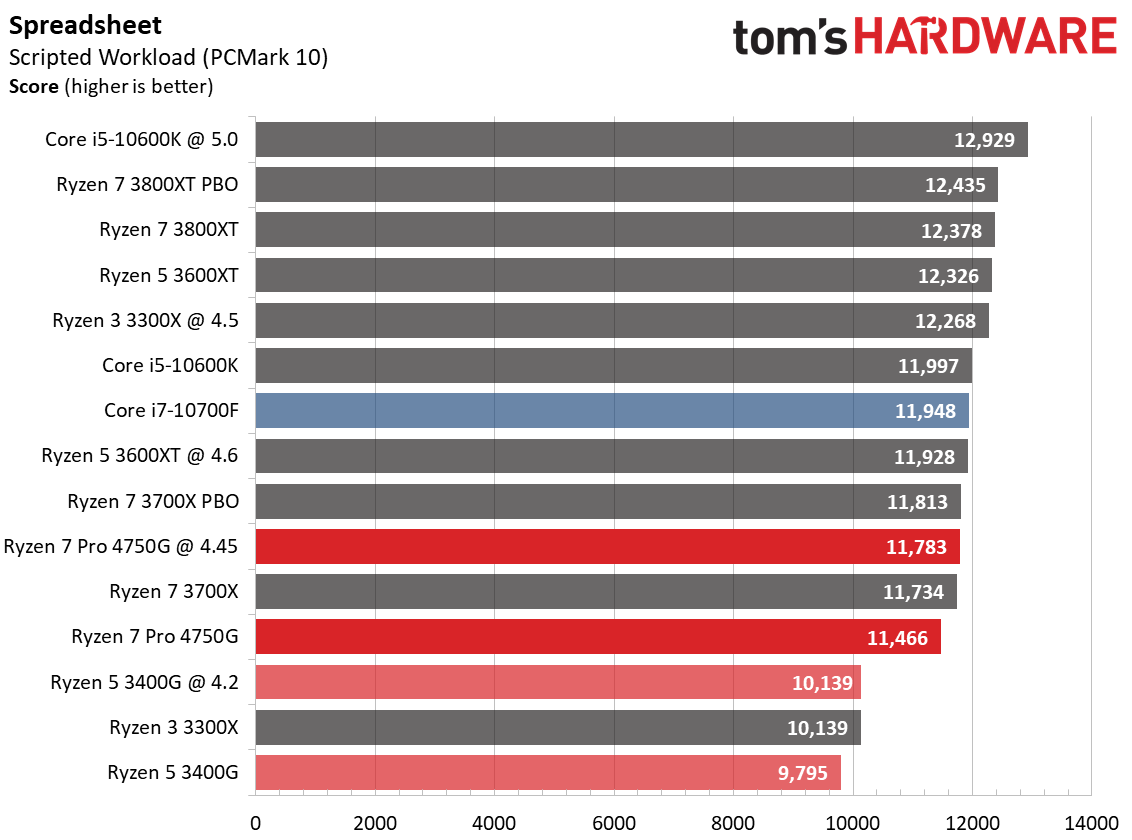
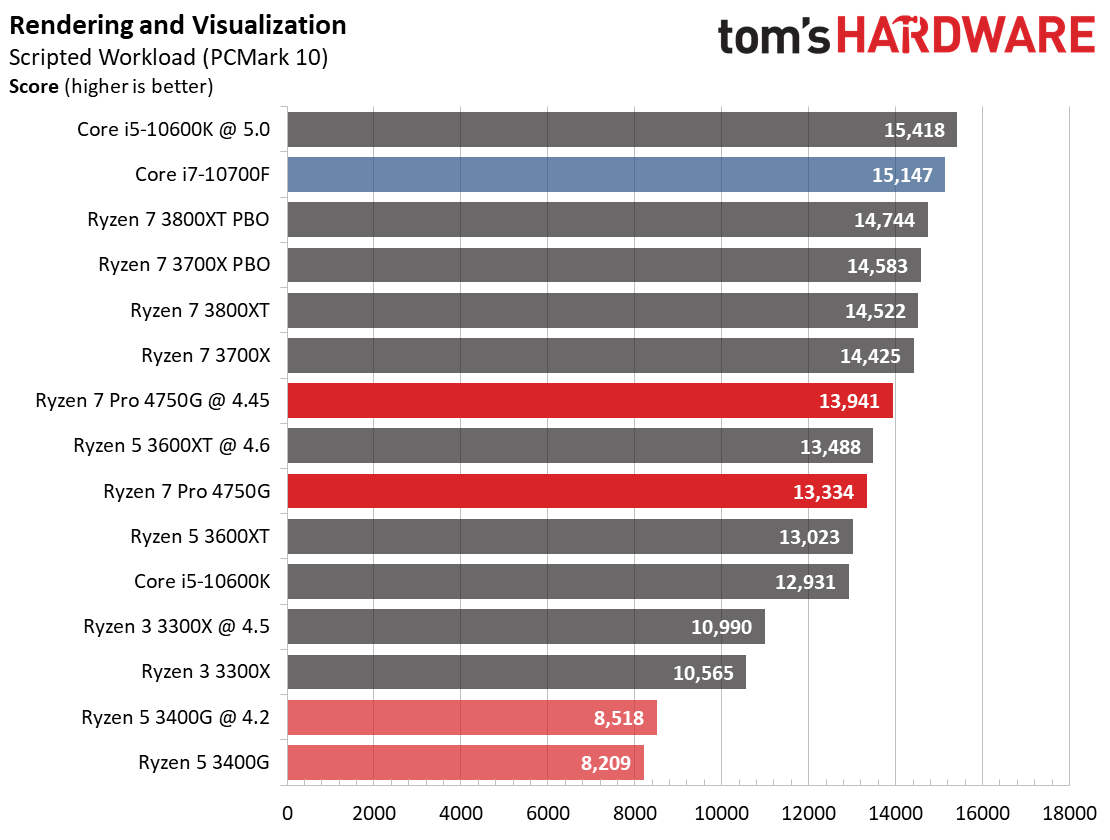
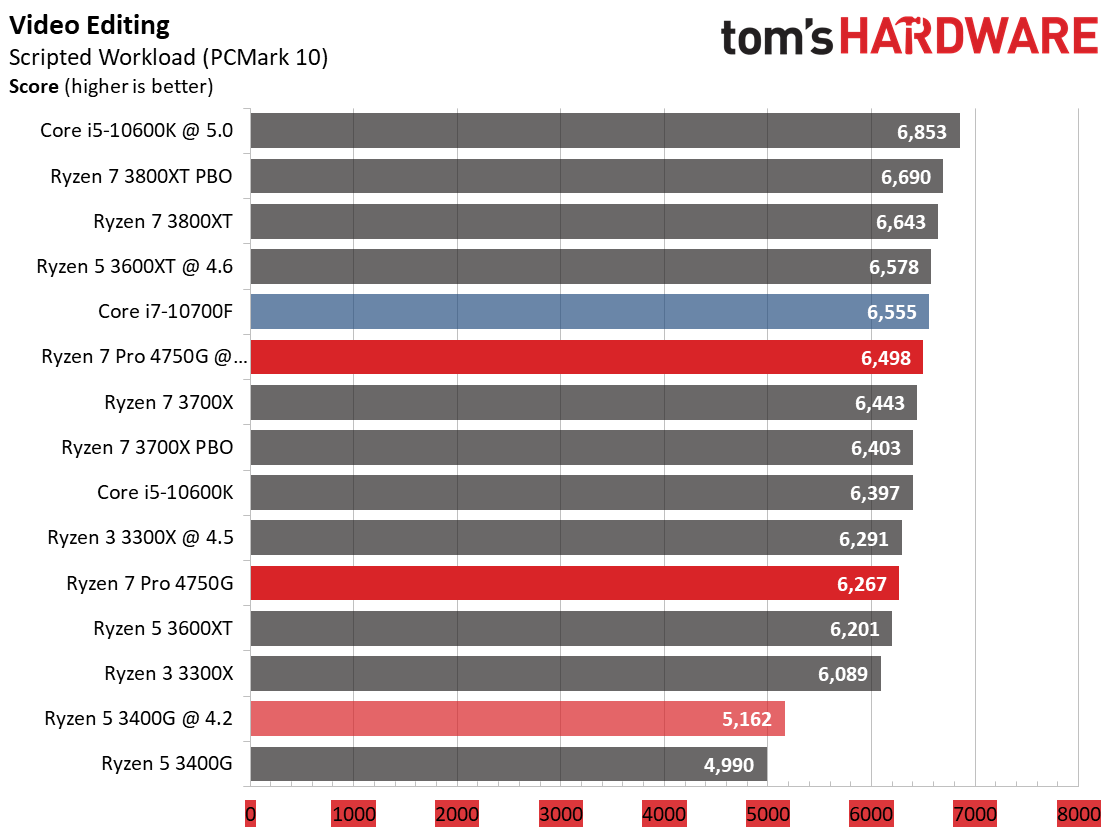
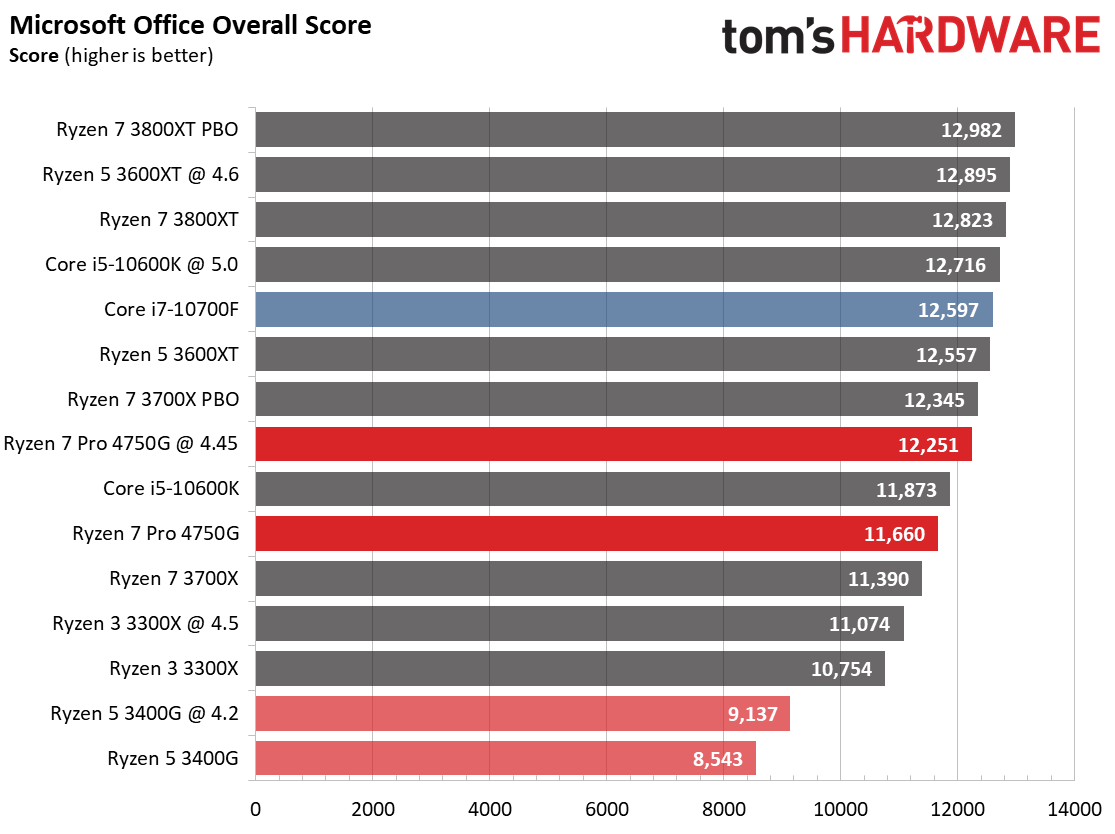
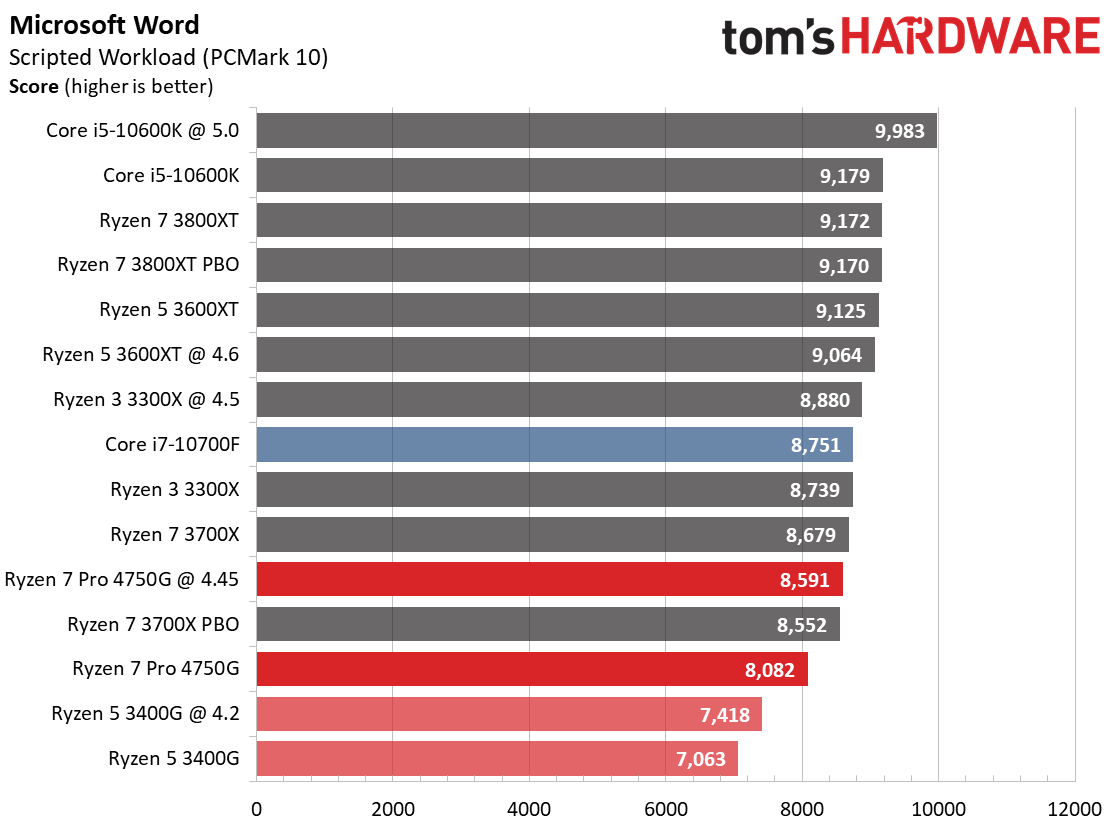
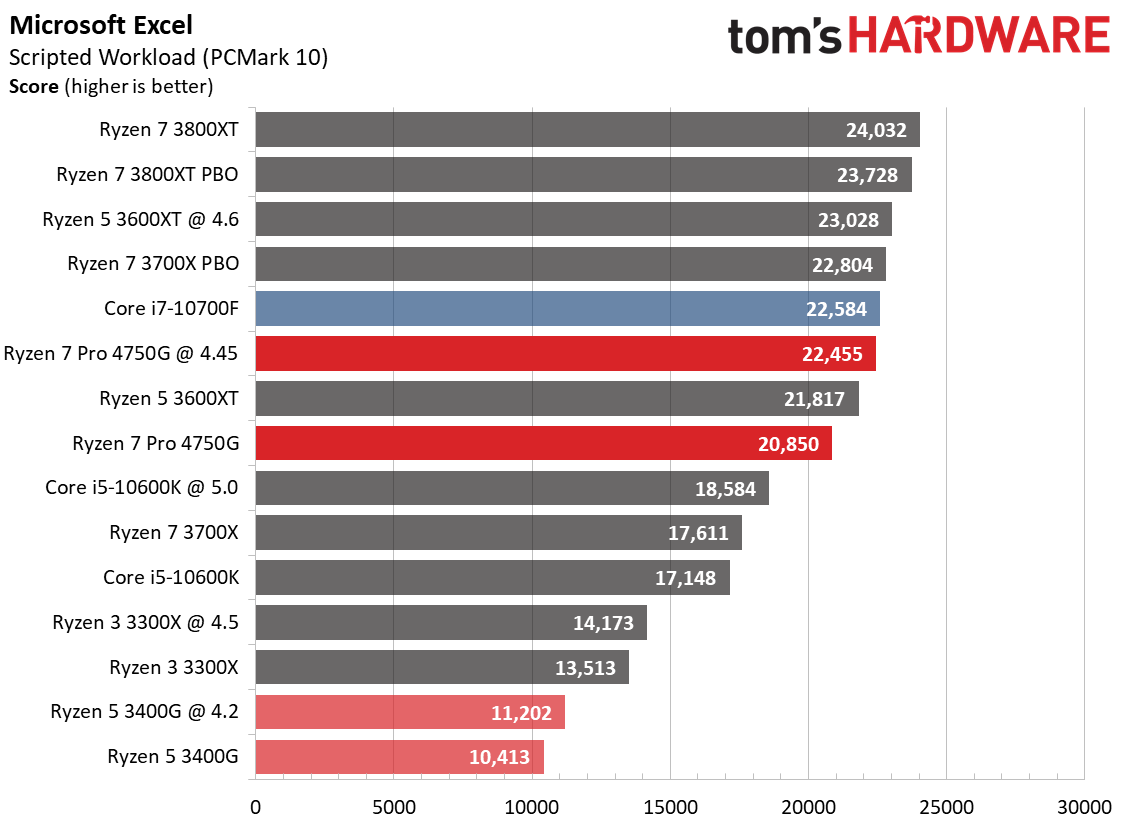
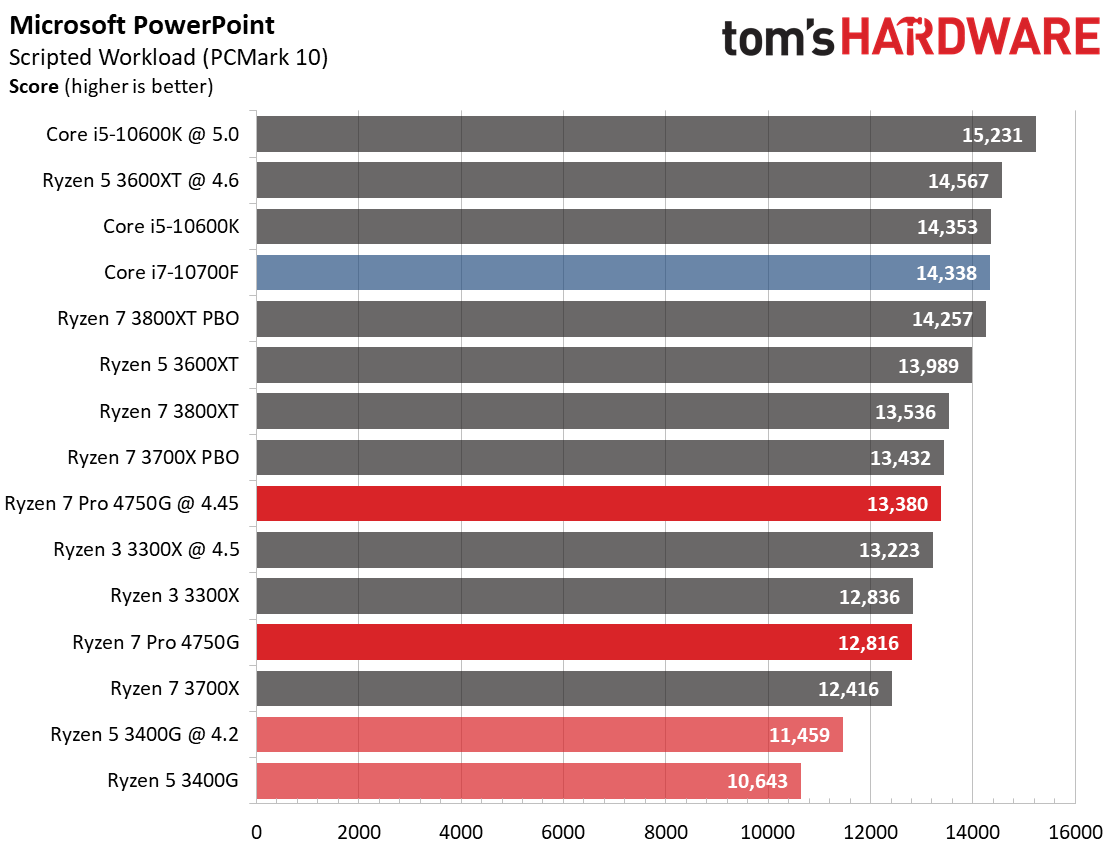
Clock rates benefit the majority of the GIMP image processing and Microsoft Office tests, both of which benefit from faster per-core performance. This area is of significant importance for the professional segment, and we can see that the Ryzen 7 Pro 4750G and the 10700F are often closely matched, with performance skewing one way or another based on the application's preference for threading or other factors, like L3 cache capacity. Intel takes the overall lead in the Microsoft Office suite, but the 4750G leads in several of the sub-tests. Again, we're looking at a massive generational leap for AMD in both multi- and single-threaded performance, so Intel doesn't hold any clear wins that would drastically alter the purchasing decision for someone focused on light productivity applications.
Compression and AVX on AMD Ryzen 7 Pro 4750G
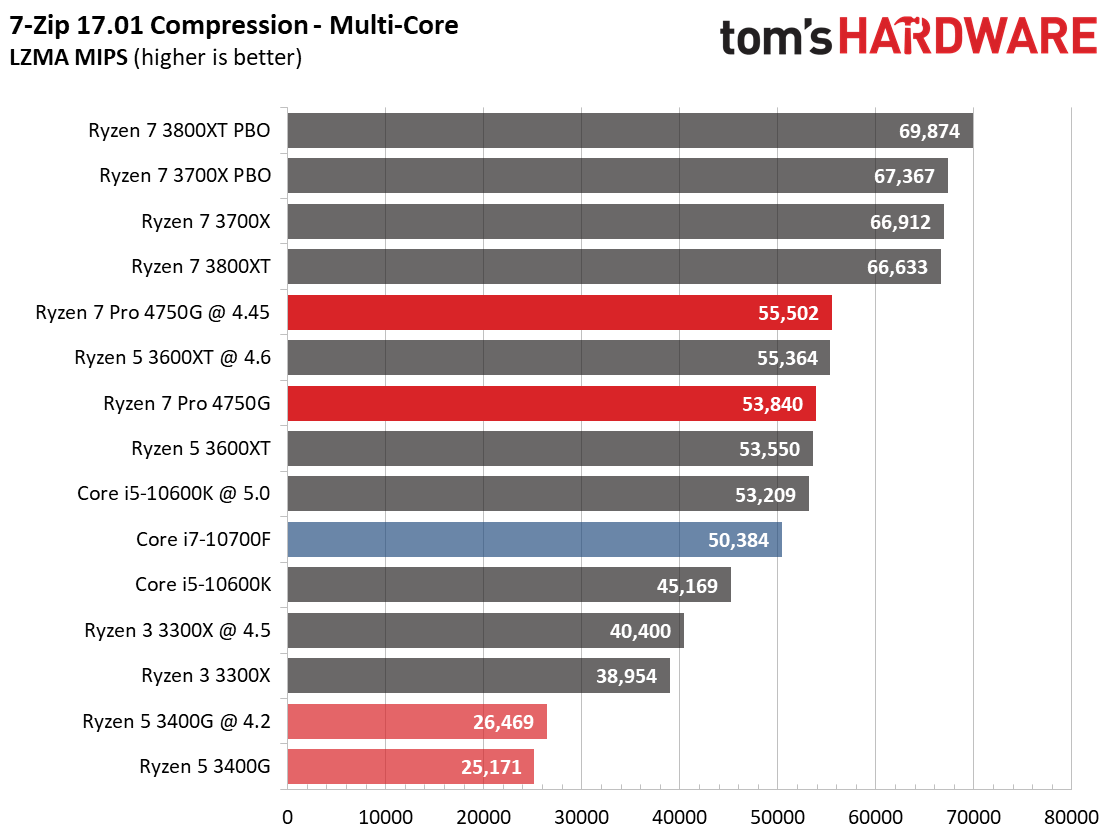

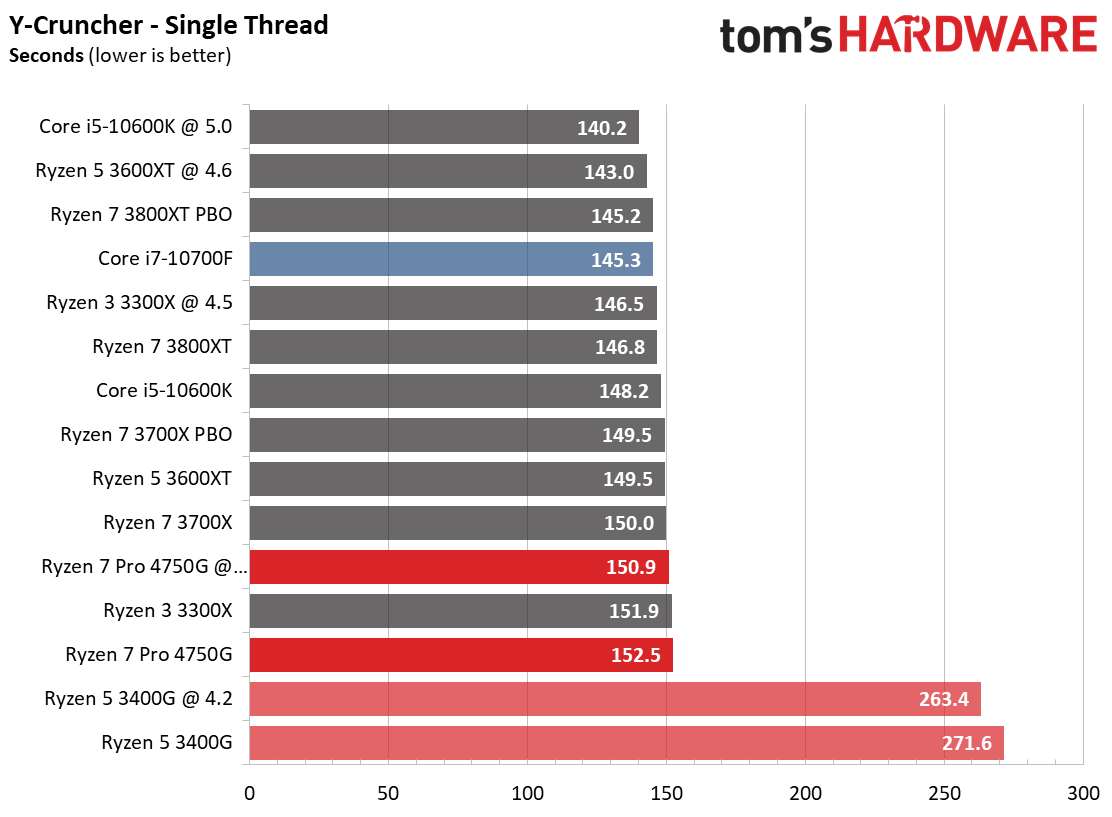
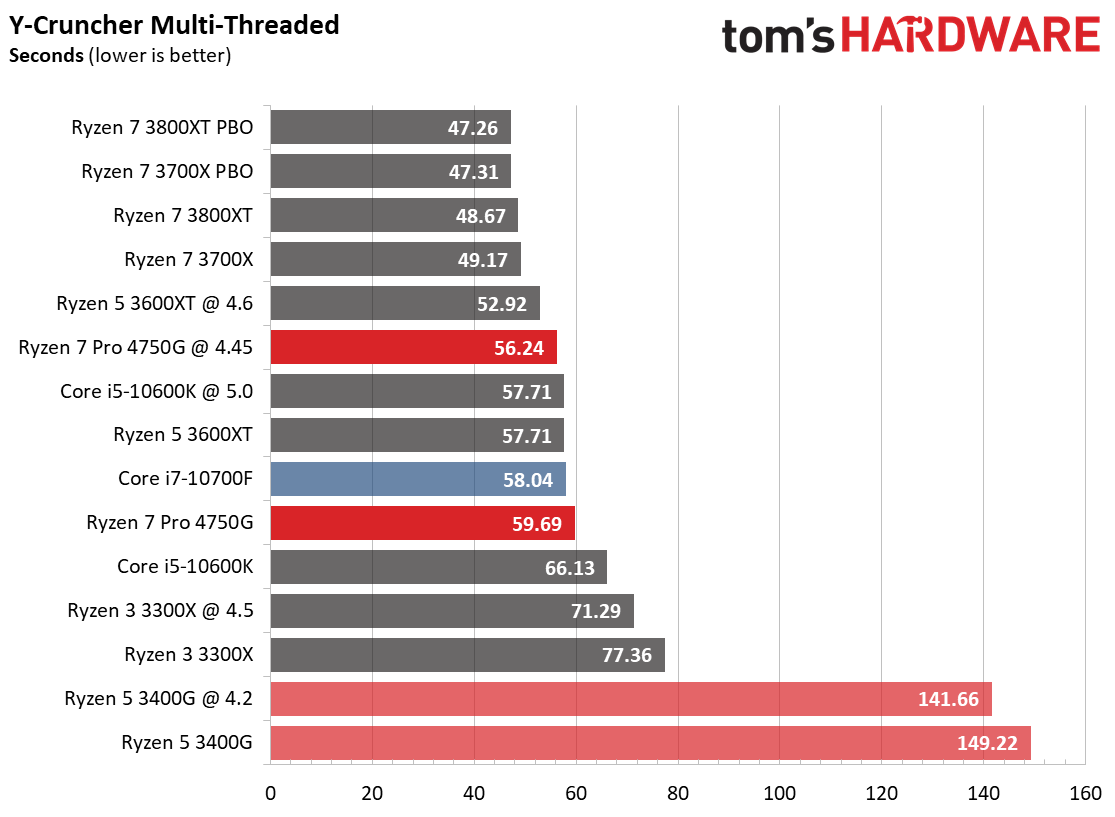
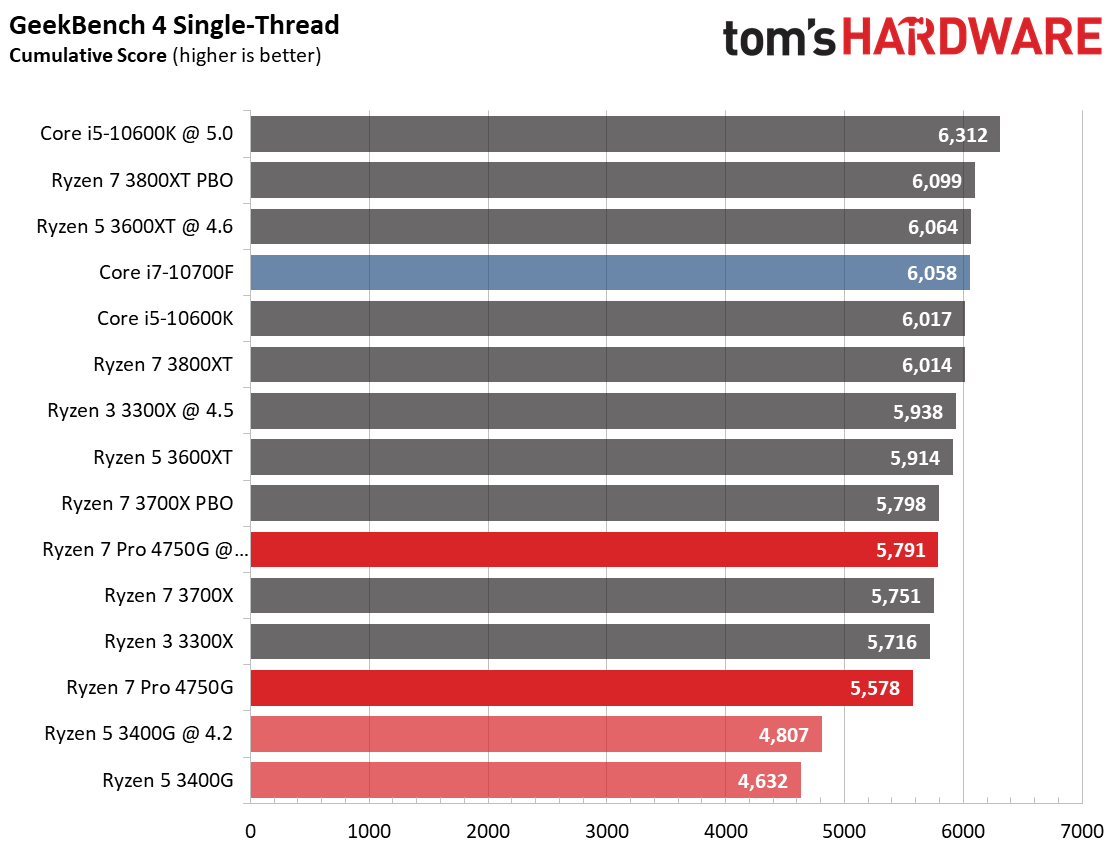
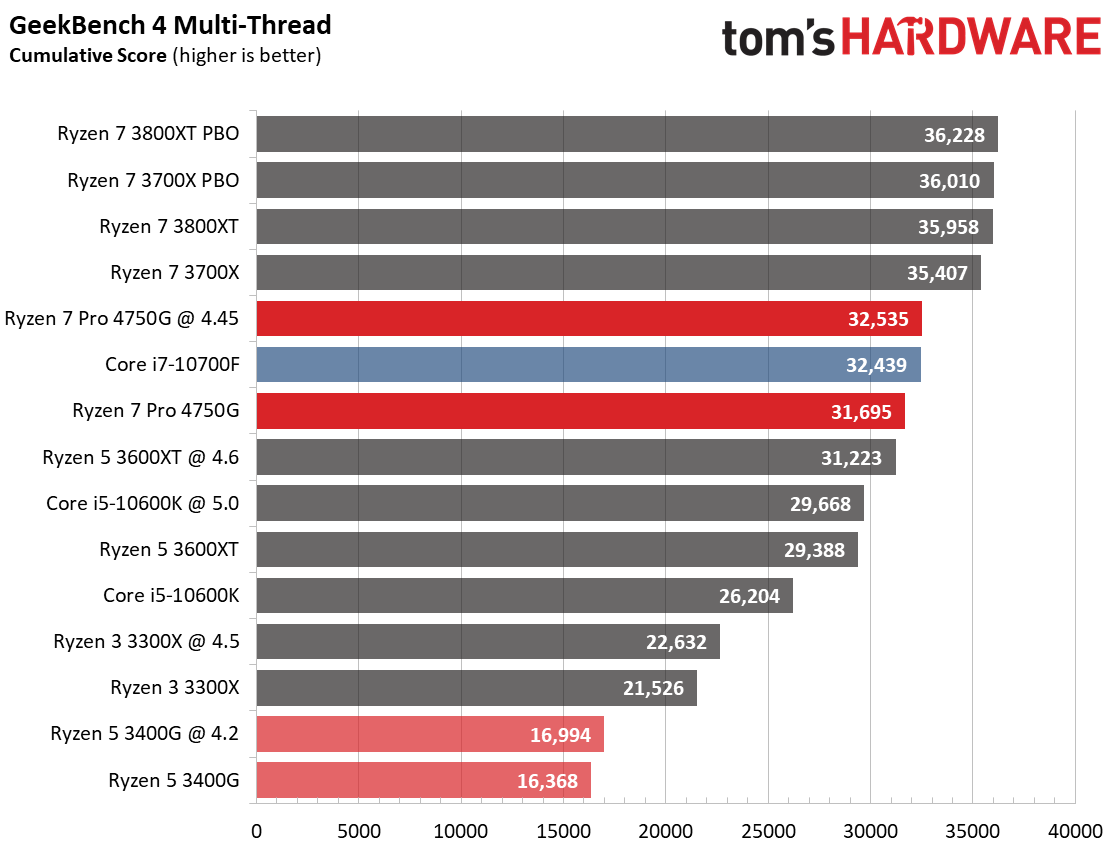
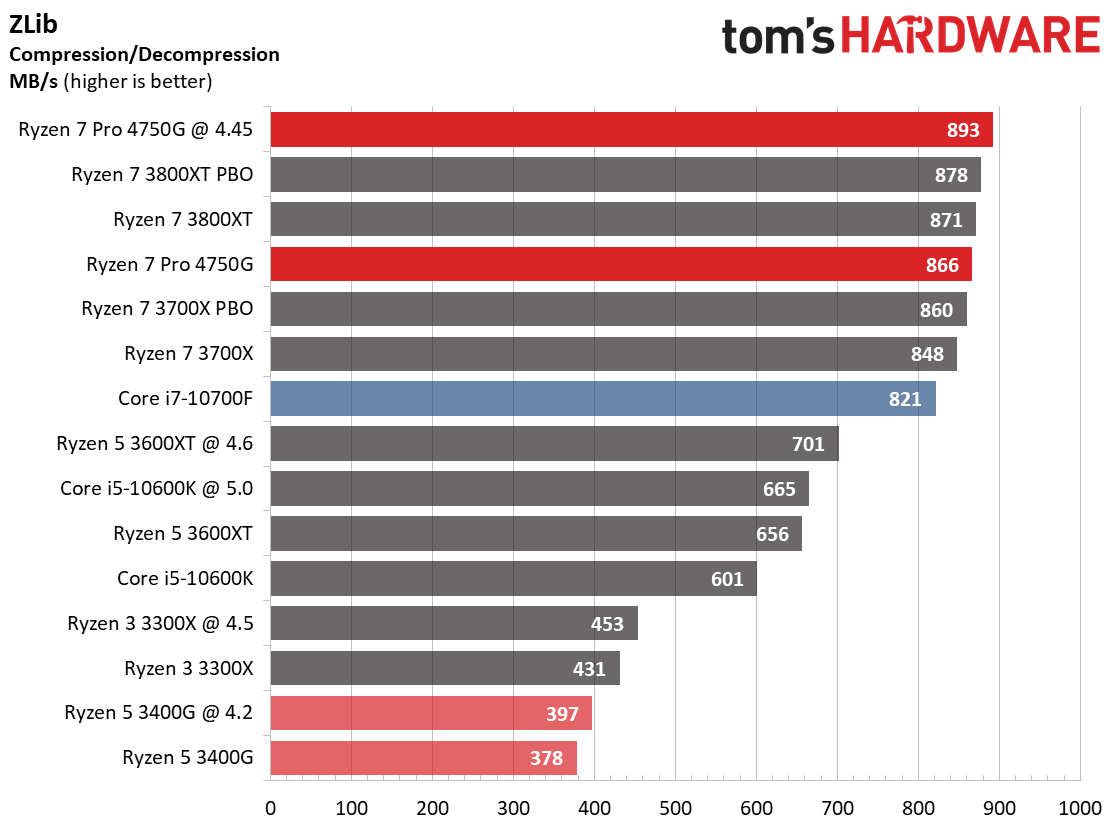
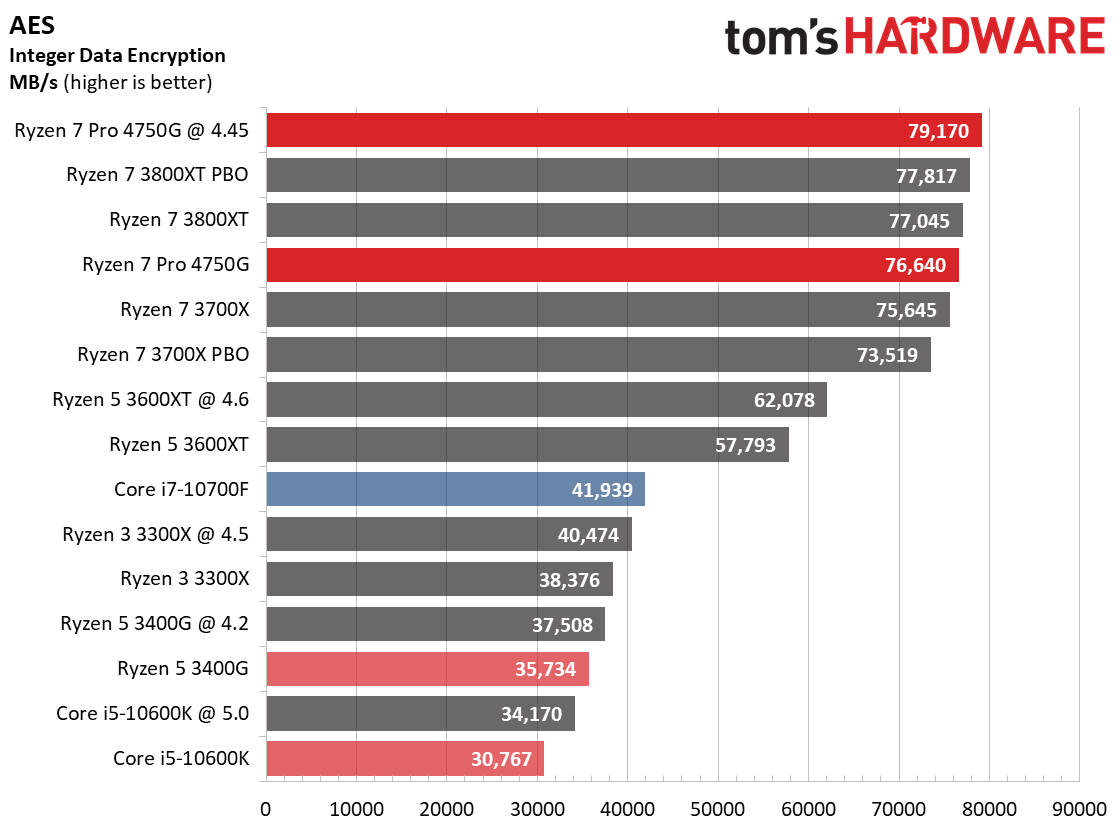
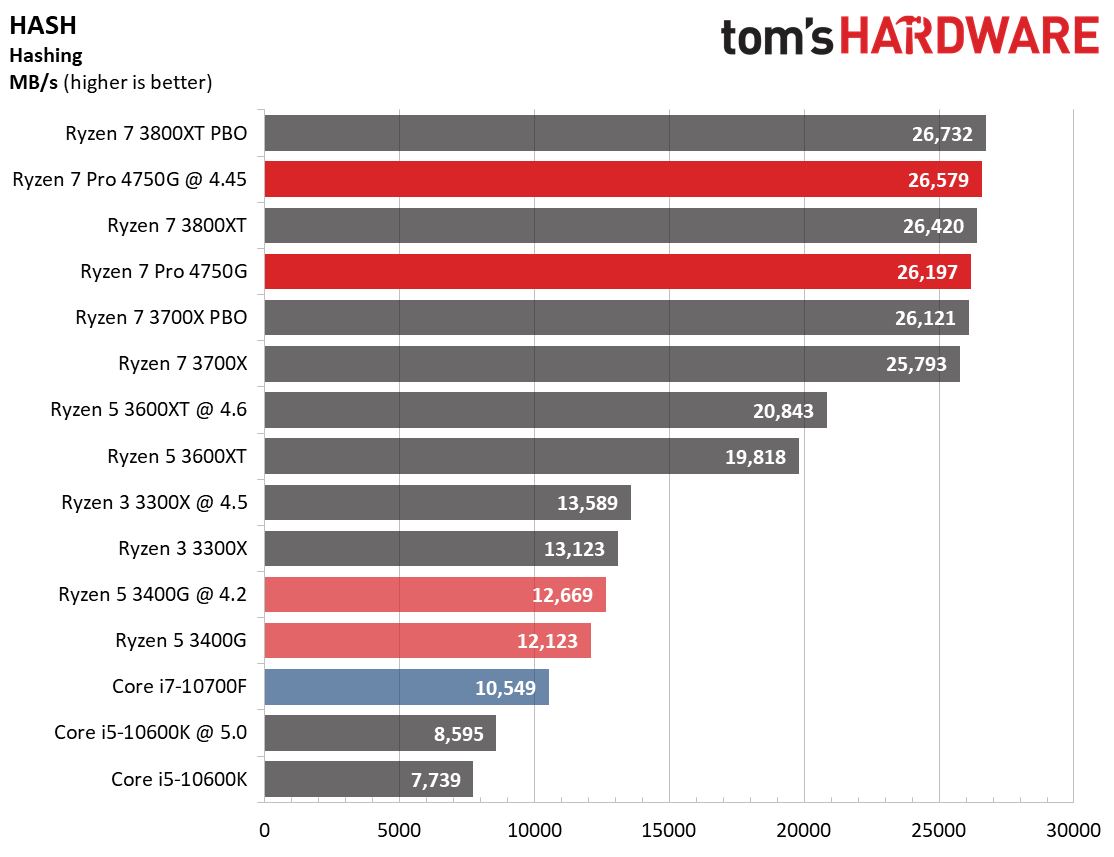
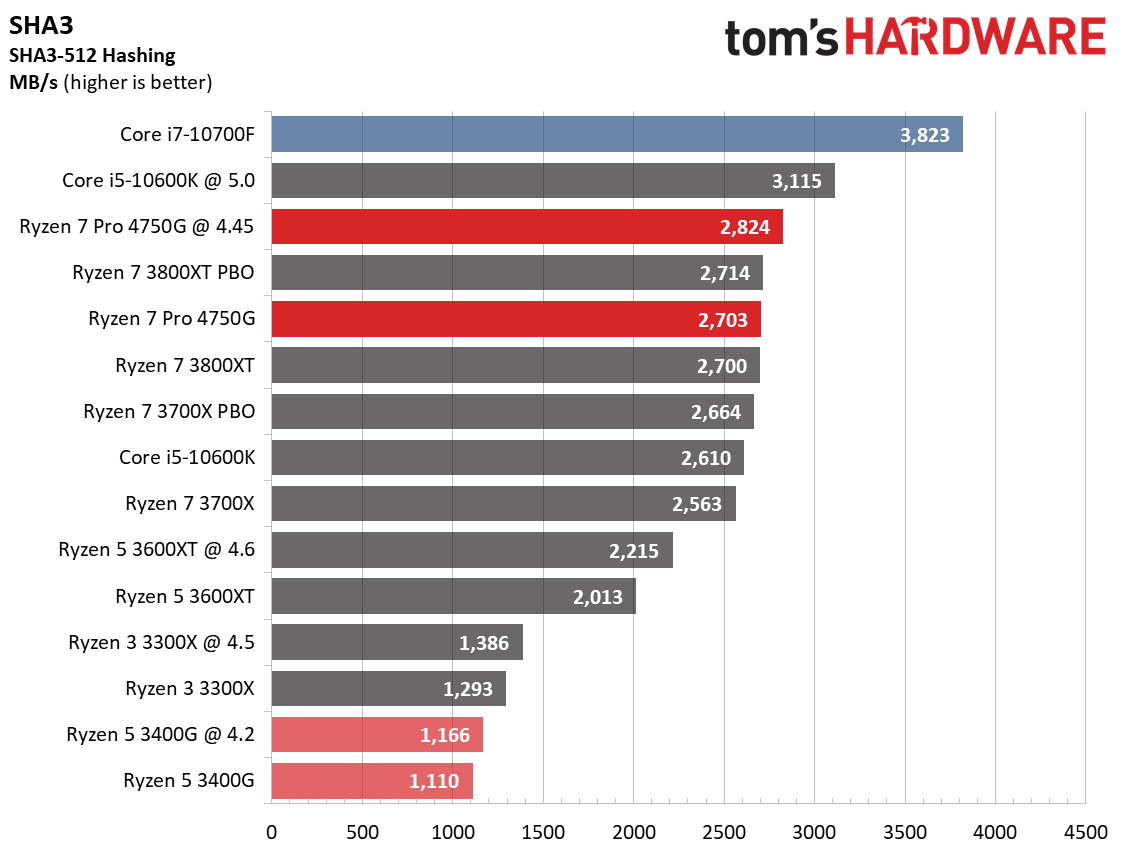
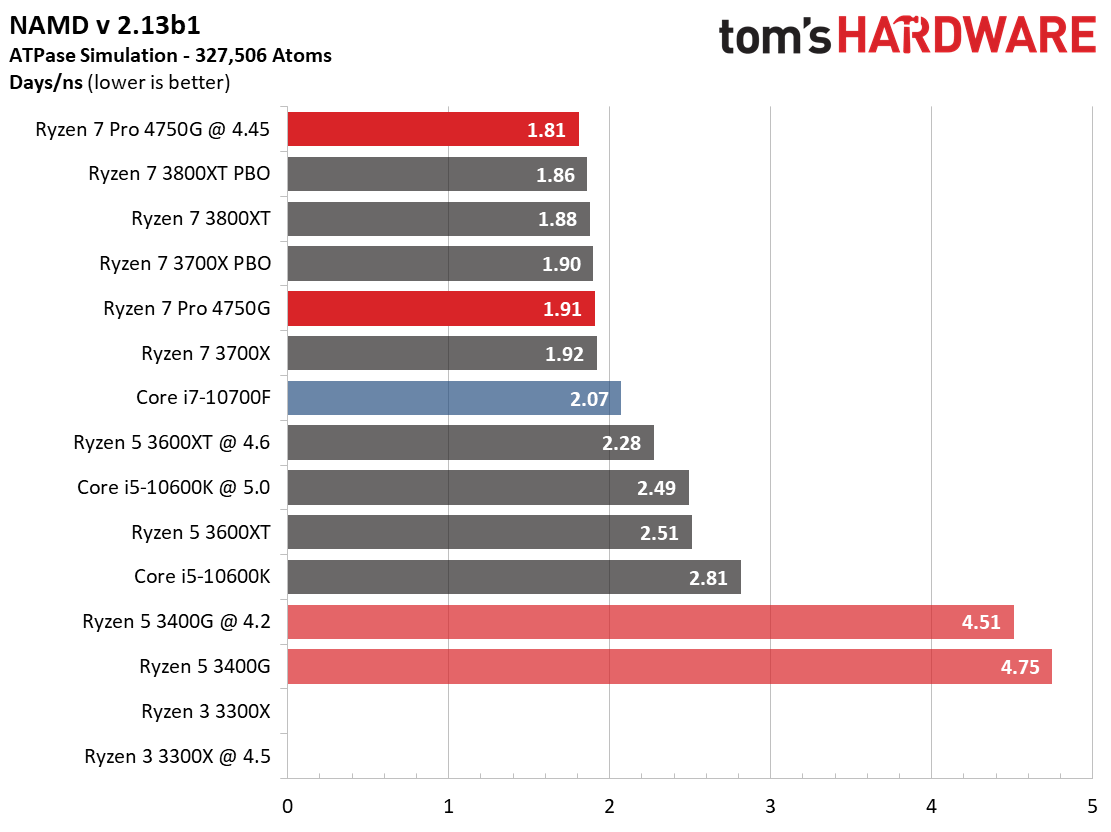
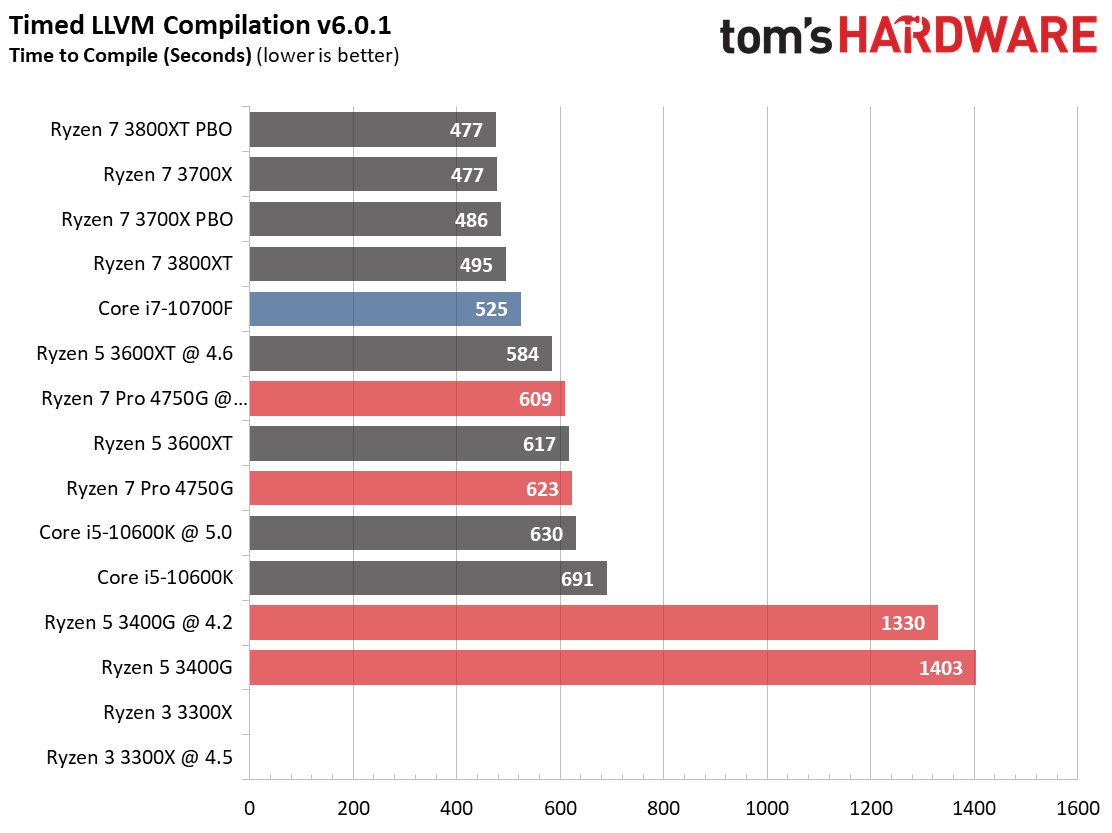
The 7zip and Zlib compression/decompression benchmarks rely heavily upon threading and work directly from system memory, thus avoiding the traditional storage bottleneck in these types of tasks. As we've come to expect, the Zen 2 processors dominate in 7zip and Zlib compression tasks.
AMD's Zen 2 architecture takes a massive step forward in AVX throughput, and here we see the impact in y-cruncher when we compare the 4750G to the 3400G. Not only does the 4750G come equipped with extra cores for crunching the threaded workload, it is nearly twice as fast in the single-threaded y-cruncher tests, too. The combination of more cores and faster AVX performance explains the 3X improvement over the 3400G in the threaded y-cruncher test.
MORE: Best CPUs
MORE: Intel and AMD Processor Hierarchy Comparisons
MORE: All CPUs Content
Current page: AMD Ryzen 7 Pro 4750G Application Benchmarks
Prev Page AMD Ryzen 7 Pro 4750G Discrete GPU Gaming Benchmarks Next Page Promising, But Out of Reach
Paul Alcorn is the Editor-in-Chief for Tom's Hardware US. He also writes news and reviews on CPUs, storage, and enterprise hardware.
-
mdd1963 I expected /hoped for a bit more than bumping FPS in games up only 10-15% compared to the 3400G.... (Apparently I will not be happy until they can match GTX1060-level of performance into the APU)Reply -
neojack impressive results ! this APU is more powerfull than my 2700x in raw power, AND has an igpu about equal to a gtx 1050Reply -
JarredWaltonGPU Reply
It's a bit weird, because the memory bandwidth is lower but all system RAM can be treated as shared VRAM, so you can sometimes run higher settings with less performance problems on in integrated Vega 8 GPU than on a dedicated GPU. But in general, Vega 8 for Renoir is roughly equal to an RX 560, which is basically equal to a GTX 1050.Gurg said:Curious as to which discrete GPU the iGPU is the equivalent.
In a lot of cases, the 1050 is still 25% faster, though. For example, Far Cry 5 1080p normal settings, I got 43 fps, Shadow of the Tomb Raider 1080p Medium I got 39 fps, and Strange Brigade 1080p medium I got 72 fps. That means the GTX 1050 beat the integrated 4750G's Vega 8 Graphics, even when the latter was overclocked. And the GTX 1050 is a pretty slow GPU by today's standards -- the GTX 1650 Super is over twice as fast as the GTX 1050. -
Gurg Reply
Thanks for the reply. It seems like a CPU/iGPU for a $1,000 laptop without a discrete GPU.JarredWaltonGPU said:It's a bit weird, because the memory bandwidth is lower but all system RAM can be treated as shared VRAM, so you can sometimes run higher settings with less performance problems on in integrated Vega 8 GPU than on a dedicated GPU. But in general, Vega 8 for Renoir is roughly equal to an RX 560, which is basically equal to a GTX 1050.
In a lot of cases, the 1050 is still 25% faster, though. For example, Far Cry 5 1080p normal settings, I got 43 fps, Shadow of the Tomb Raider 1080p Medium I got 39 fps, and Strange Brigade 1080p medium I got 72 fps. That means the GTX 1050 beat the integrated 4750G's Vega 8 Graphics, even when the latter was overclocked. And the GTX 1050 is a pretty slow GPU by today's standards -- the GTX 1650 Super is over twice as fast as the GTX 1050. -
Neilbob Replynofanneeded said:"Useless"
no 4th GEN PCIe means no one will buy it.
I agree. This is why Intel is unable to sell a single CPU! A computer without 4th GEN PCIe capability might as well be a brick, right?
(Sarcasm, just in case there's doubt) -
nofanneeded ReplyNeilbob said:I agree. This is why Intel is unable to sell a single CPU! A computer without 4th GEN PCIe capability might as well be a brick, right?
(Sarcasm, just in case there's doubt)
At least intel offers 16 lanes with their CPU . This chips only offers 8 lanes Gen3 .. useless. -
Neilbob Replynofanneeded said:At least intel offers 16 lanes with their CPU . This chips only offers 8 lanes Gen3 .. useless.
I would say 'limiting' rather than useless. Especially seeing as these APUs are intended for an OEM market that in all likelihood won't be pairing them with anything more than a mid-range GPU (that's what the Ryzen 3000 series is for).
Who's to say that more lanes won't be exposed if/when AMD release these for the DIY user base?
Of course, this is just pure speculation from me. Already got my 3600 so I'm all set either way (y)
Edit: So there actually are 16 lanes (which I missed in the review) so above posts turn out to be irrelevant.